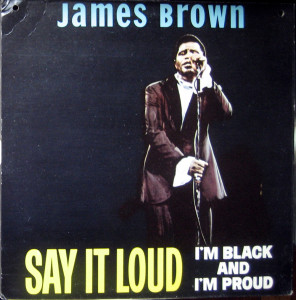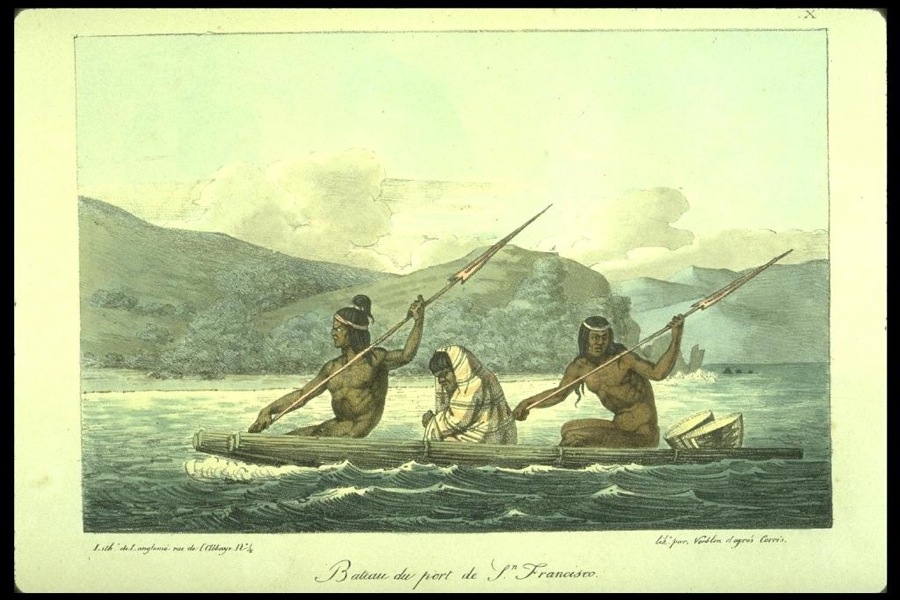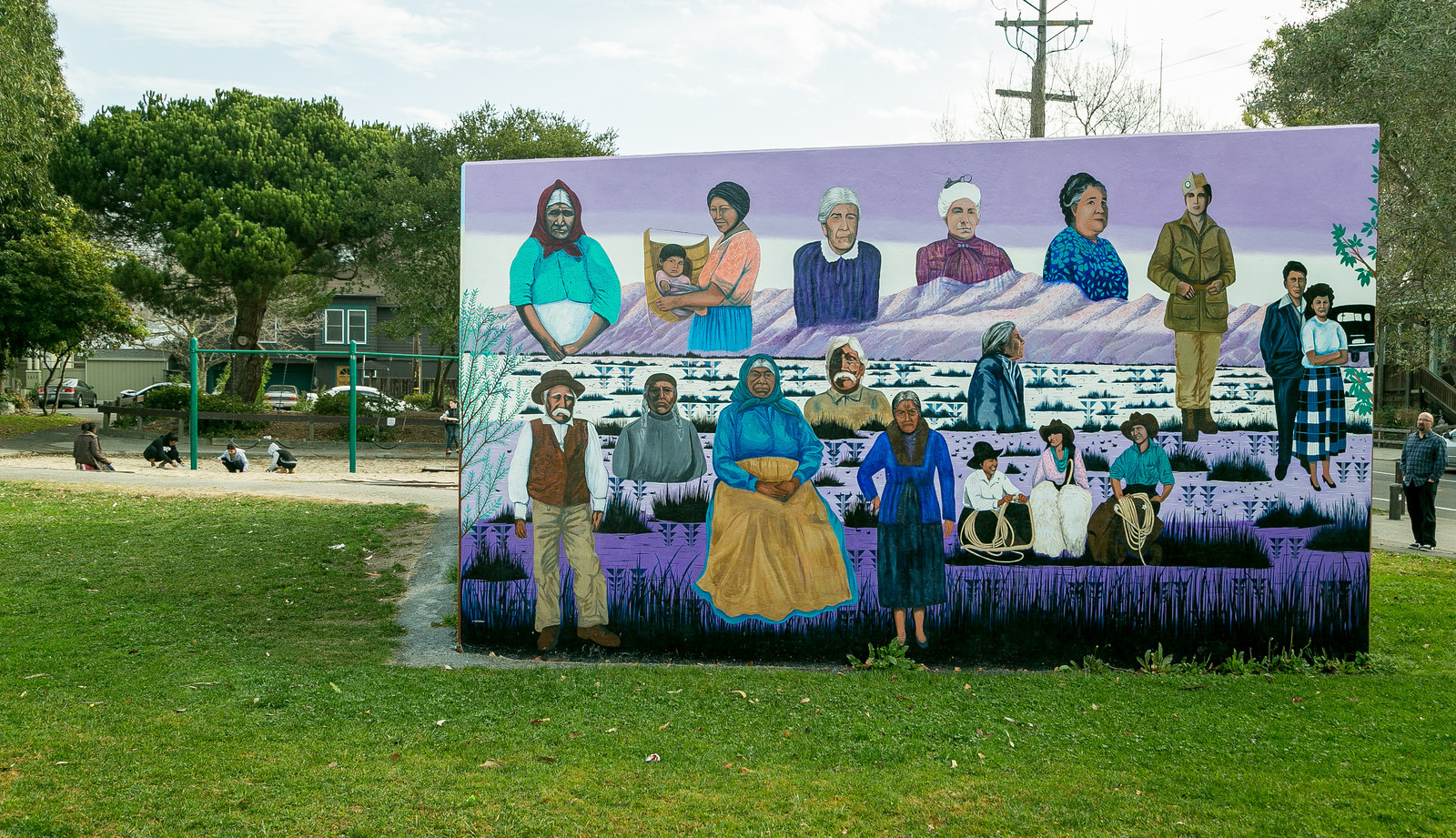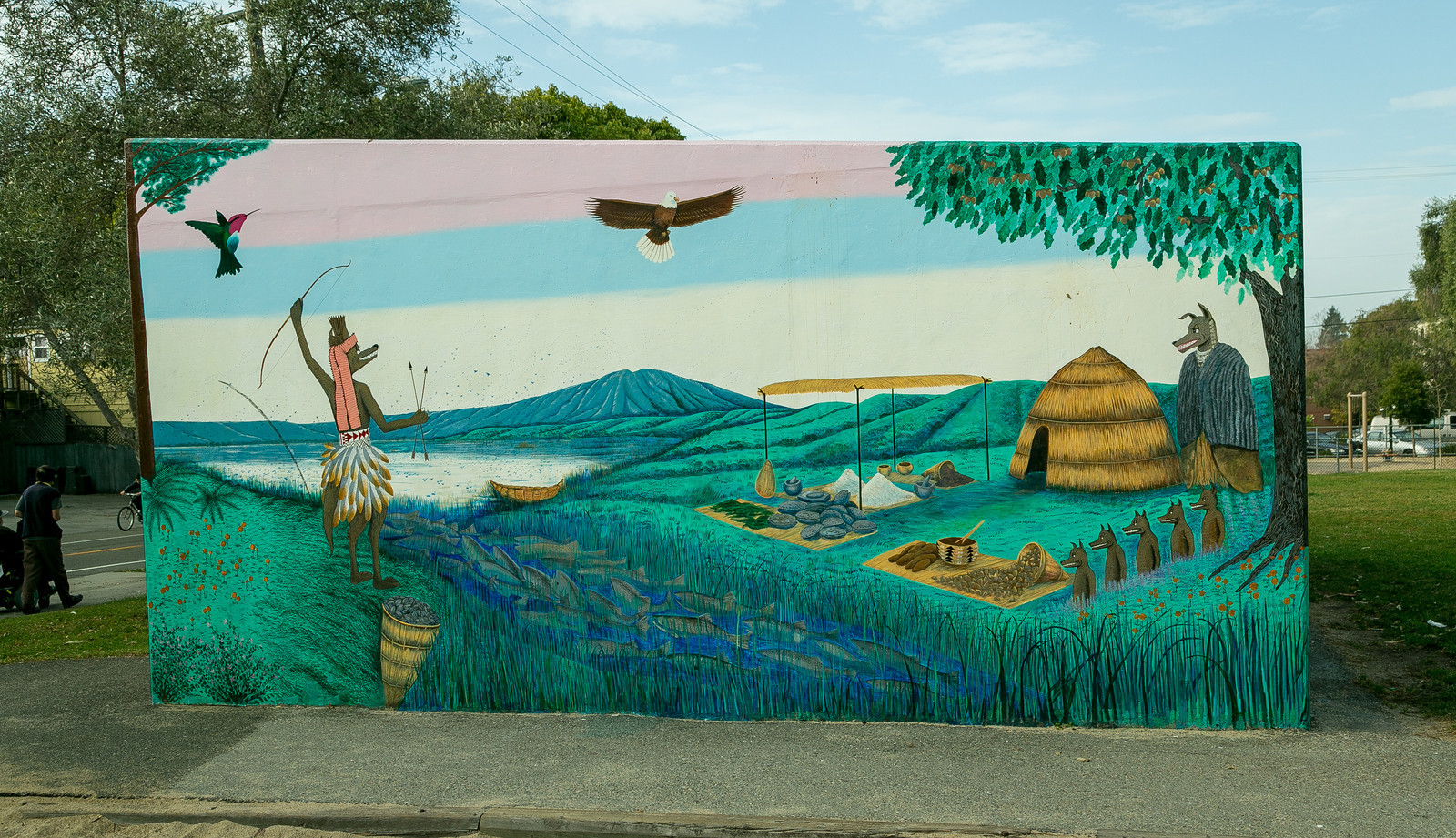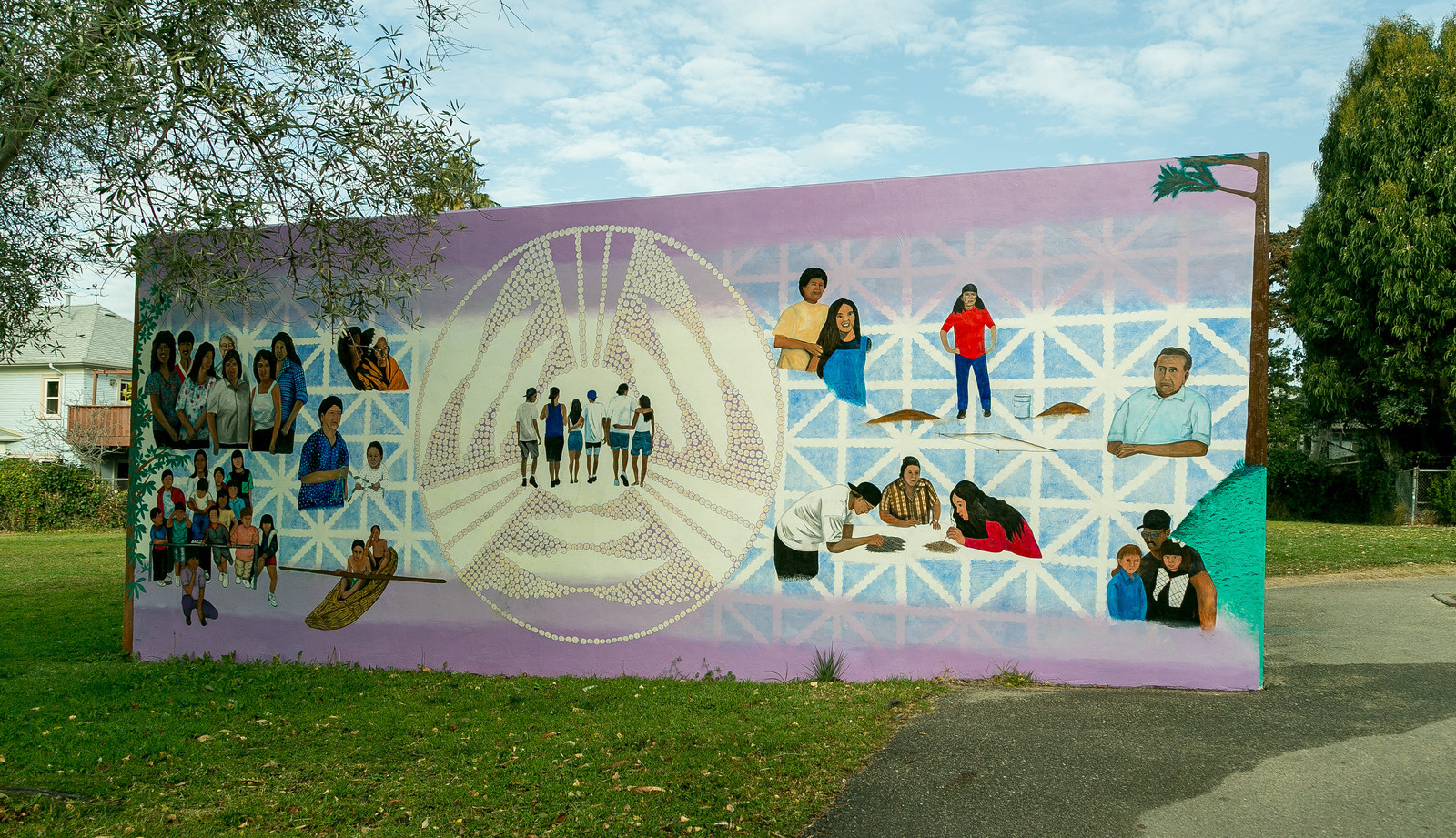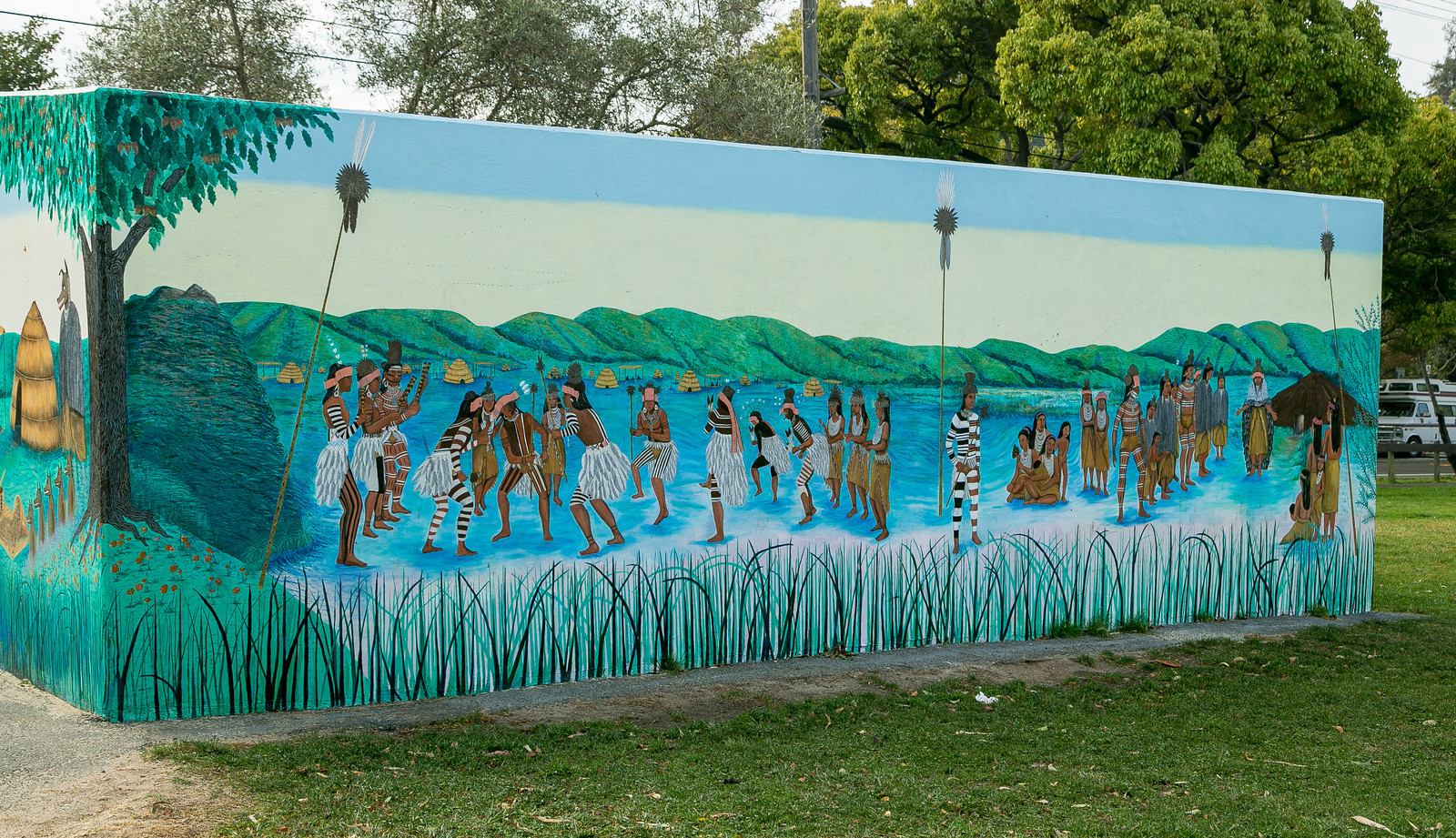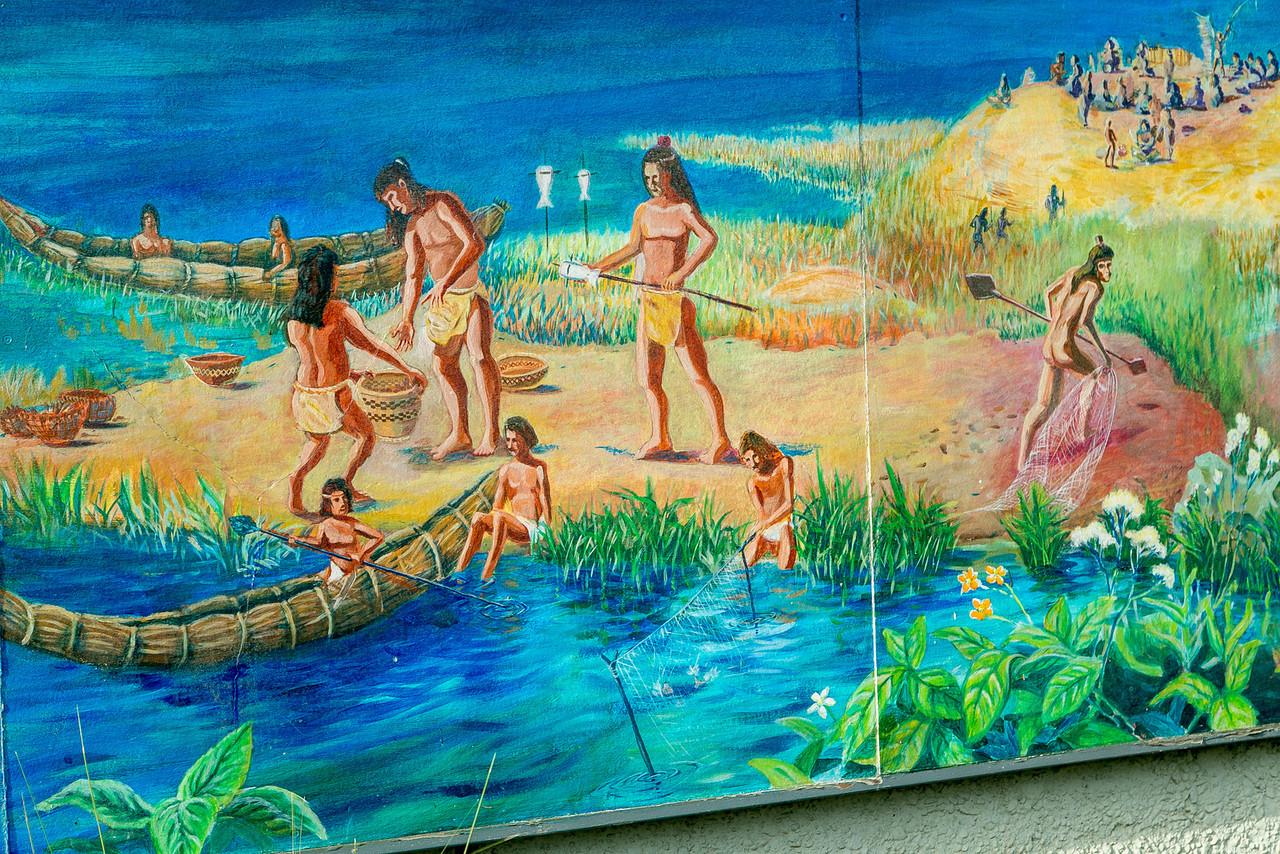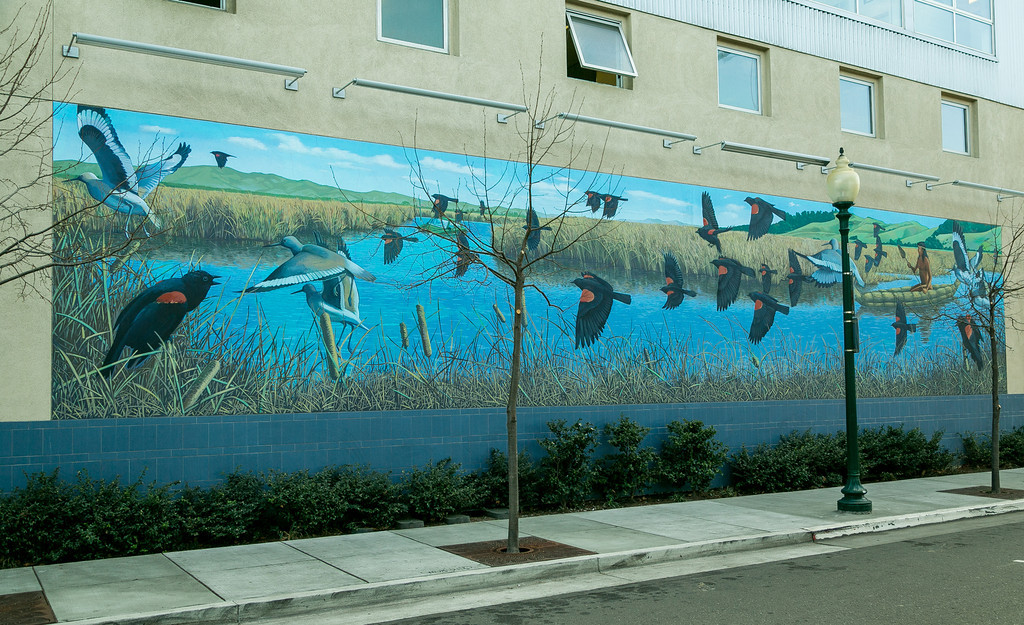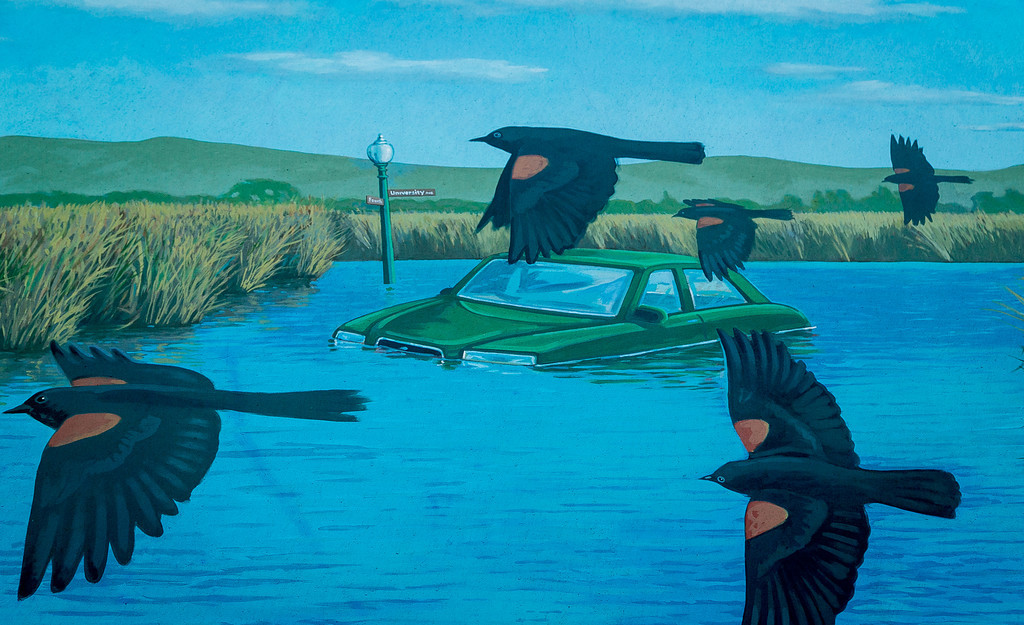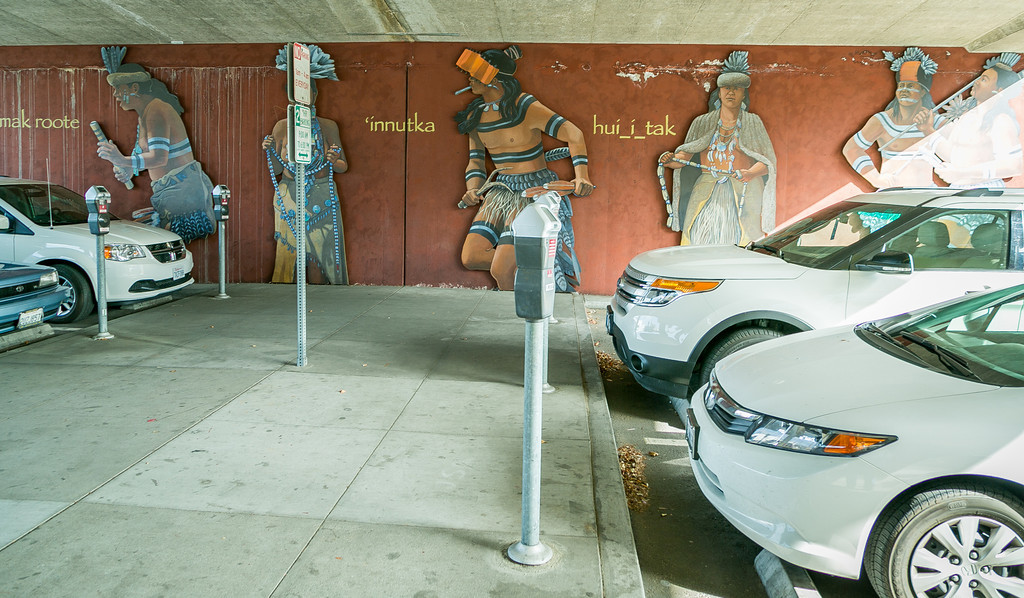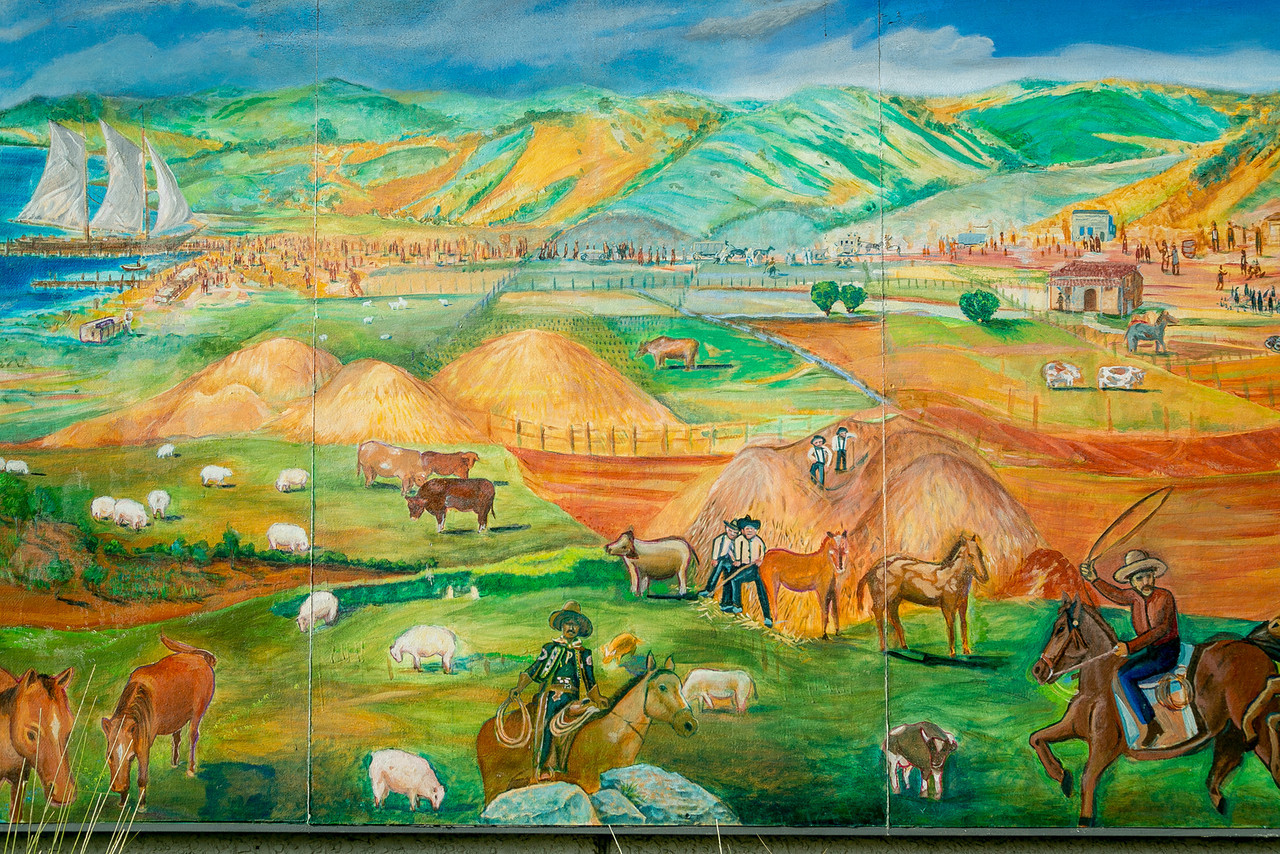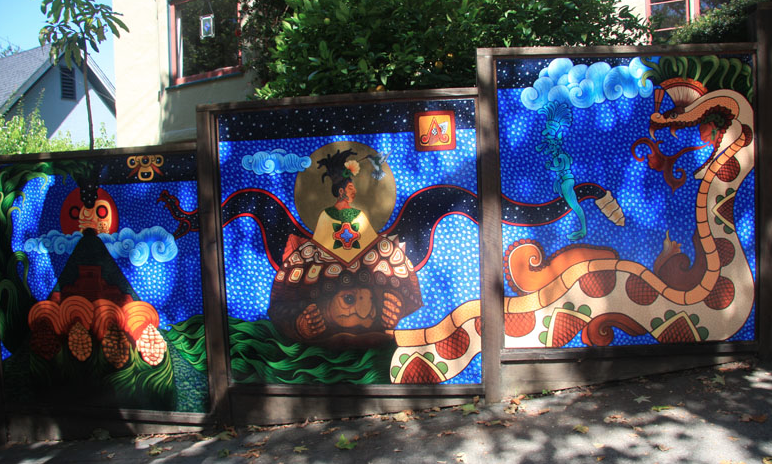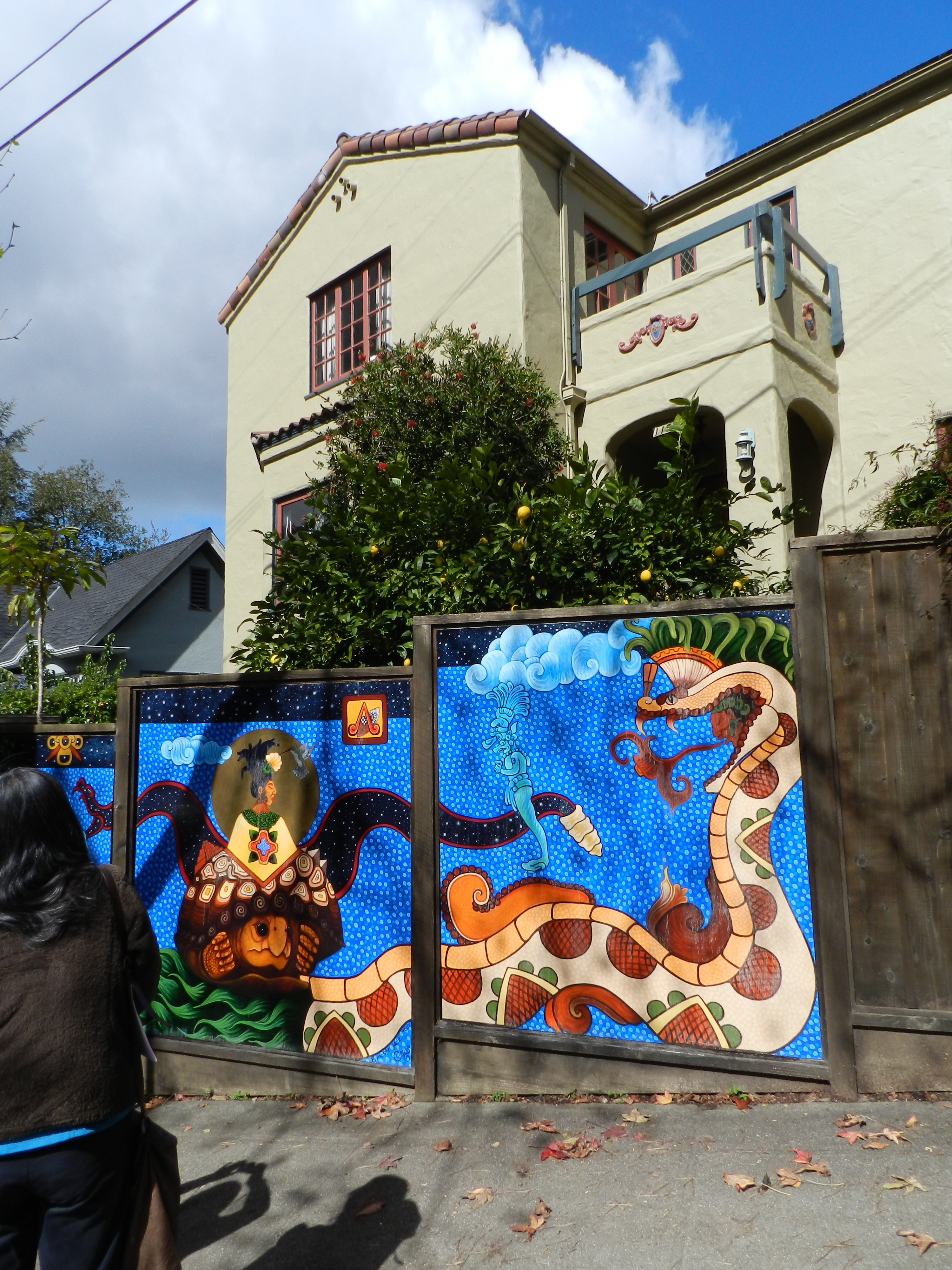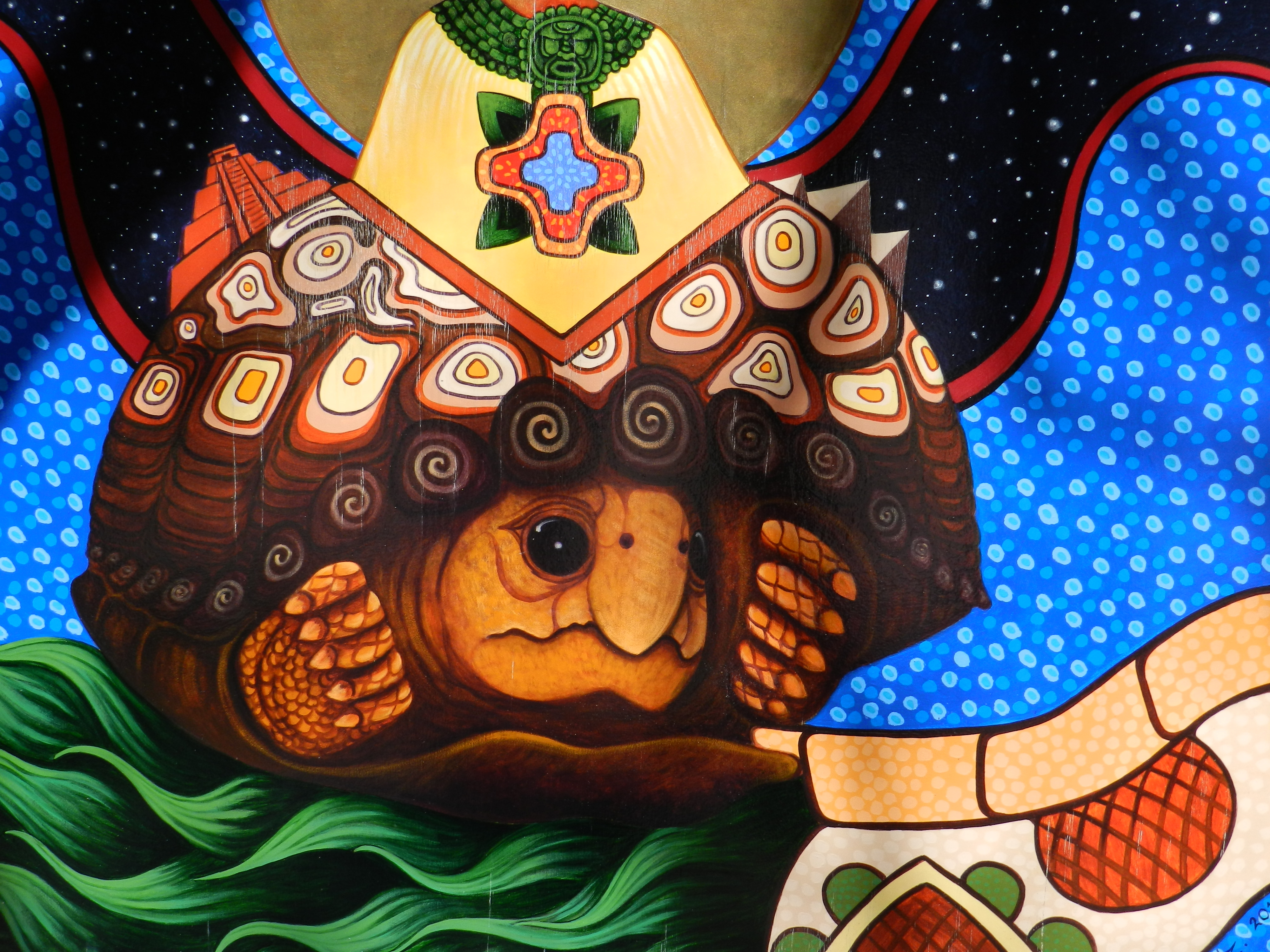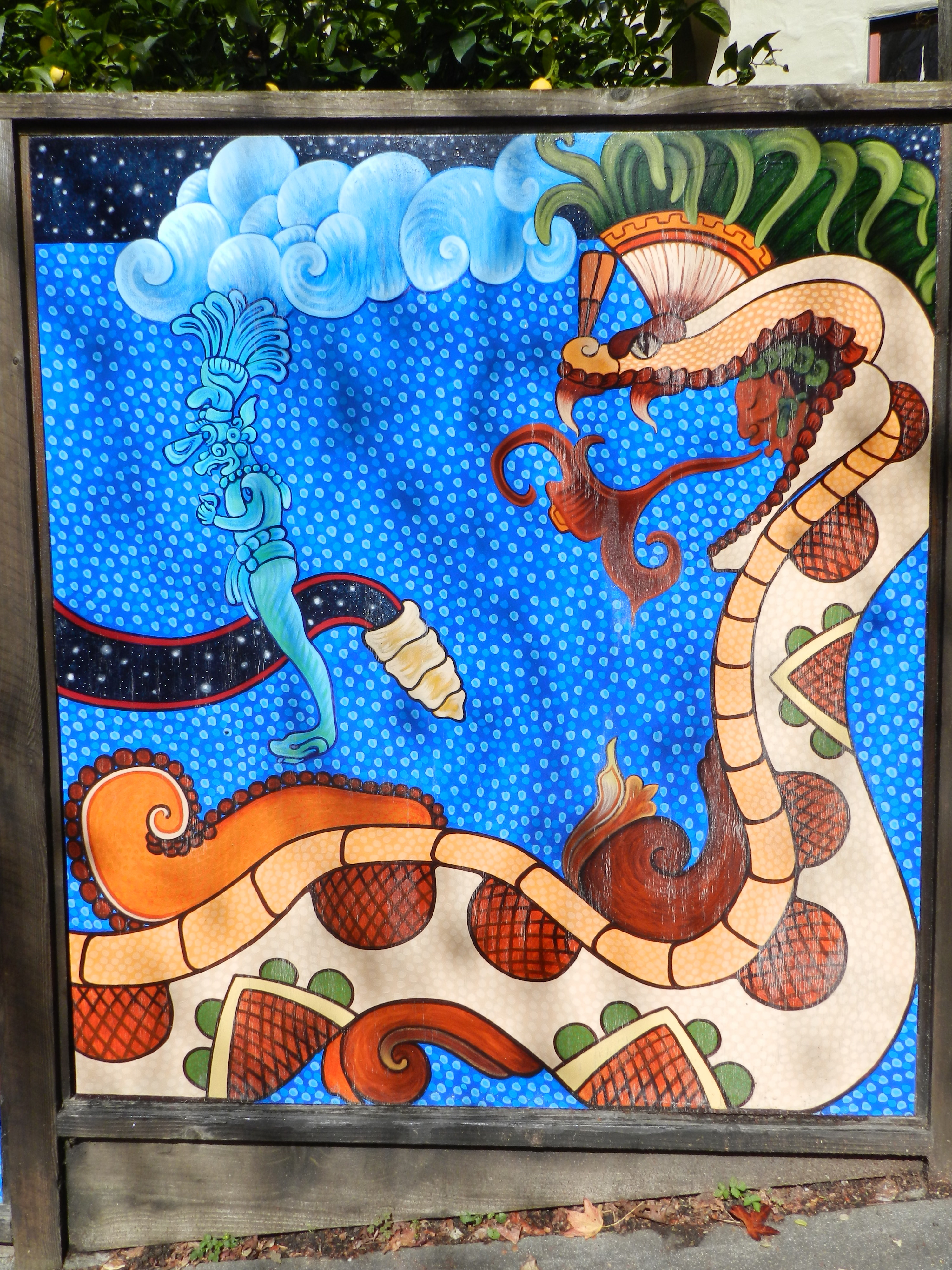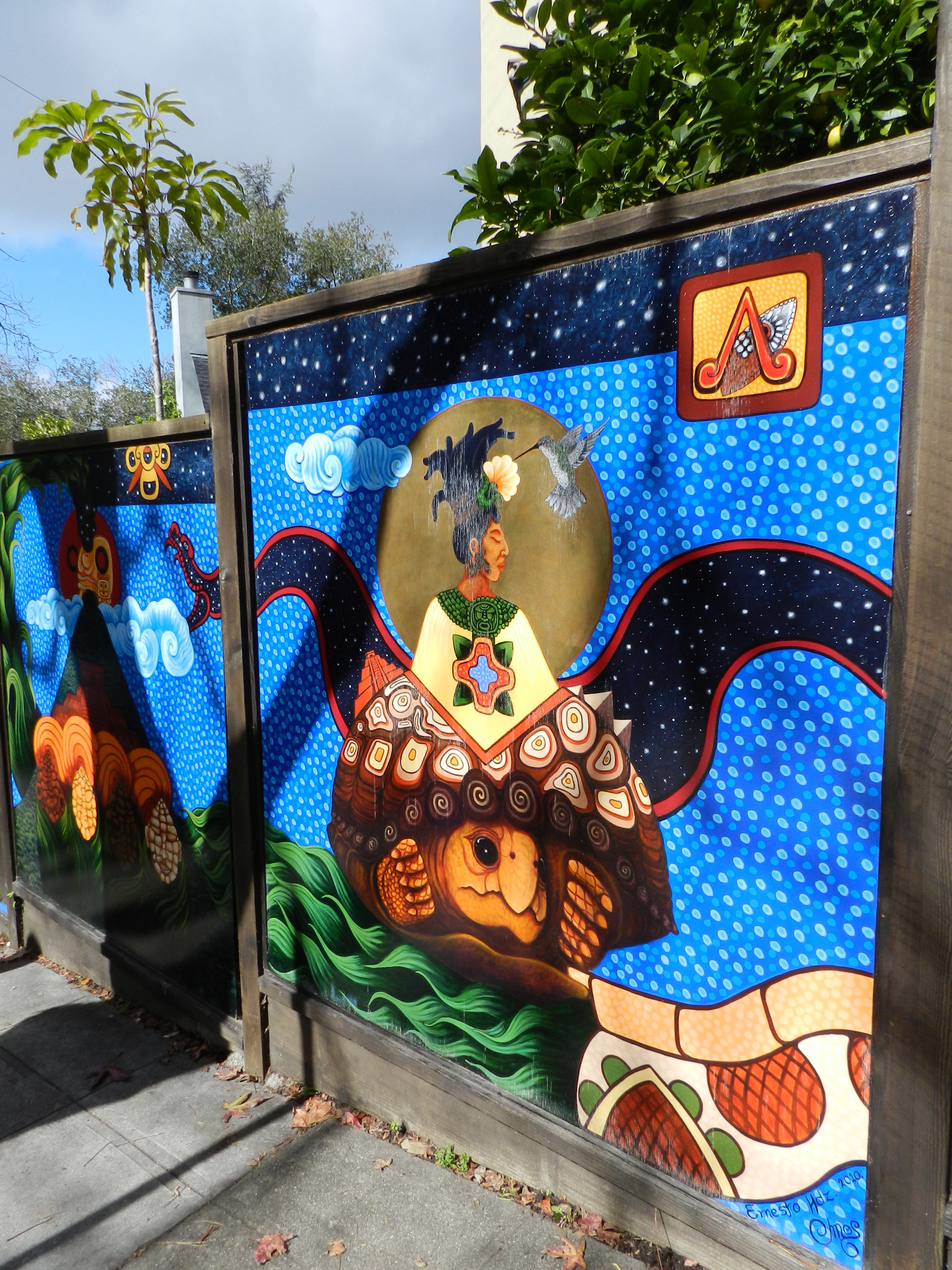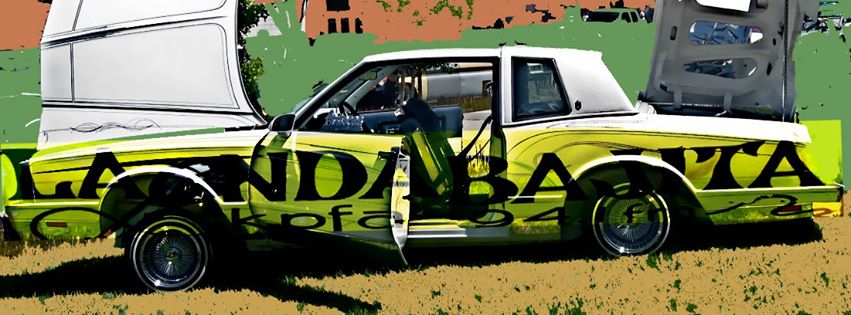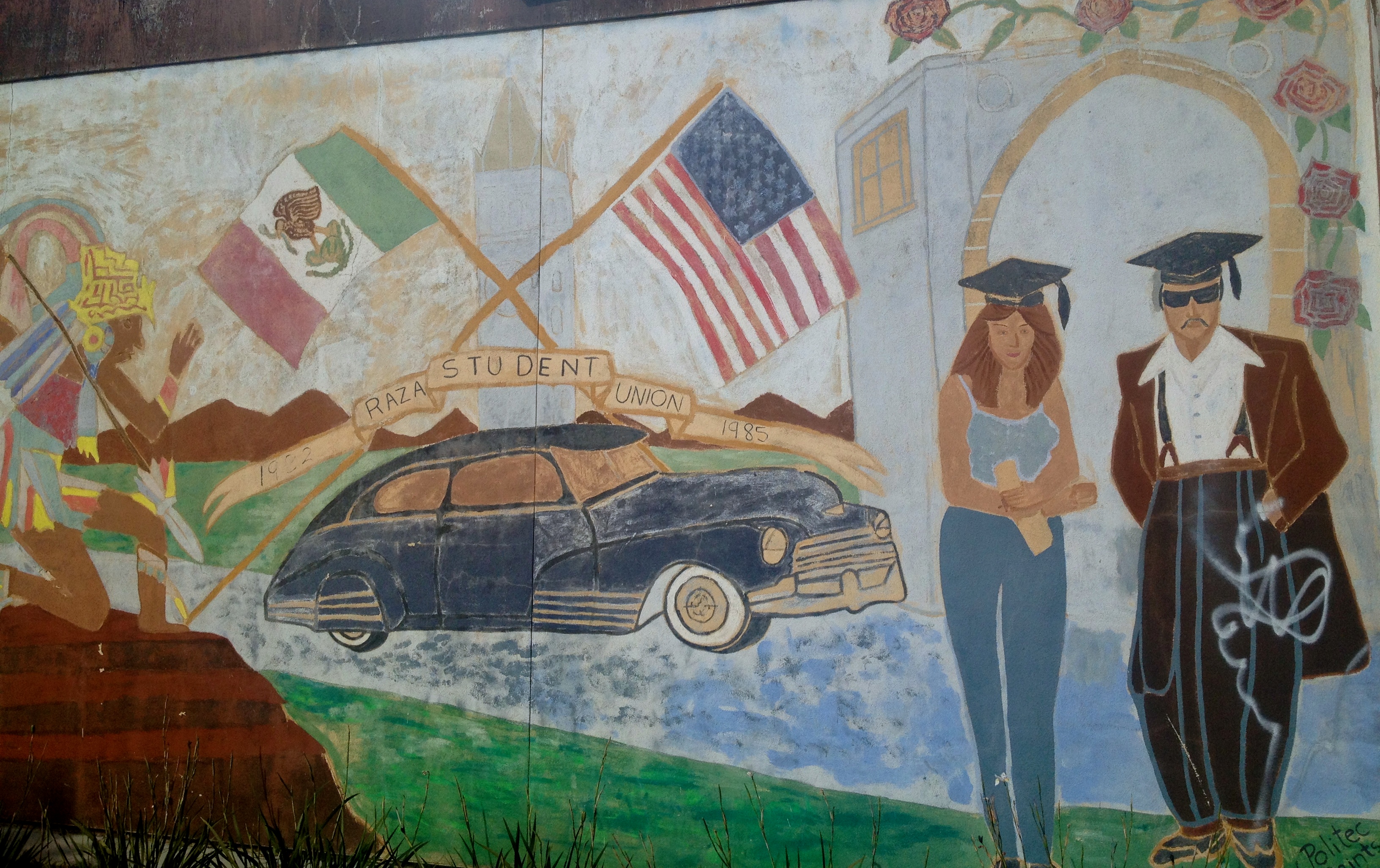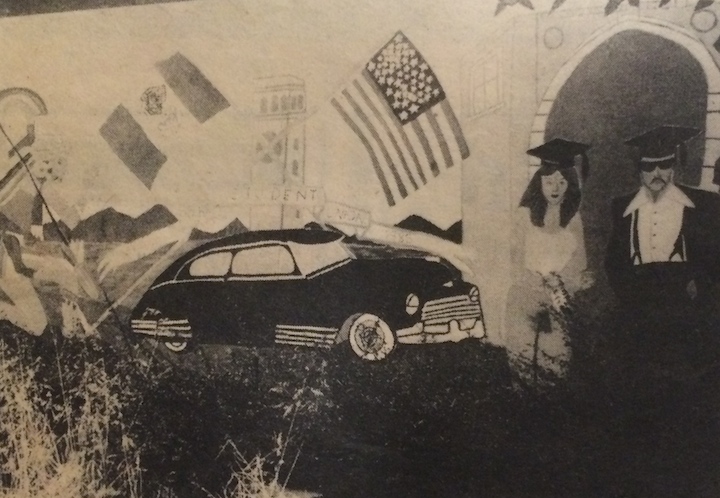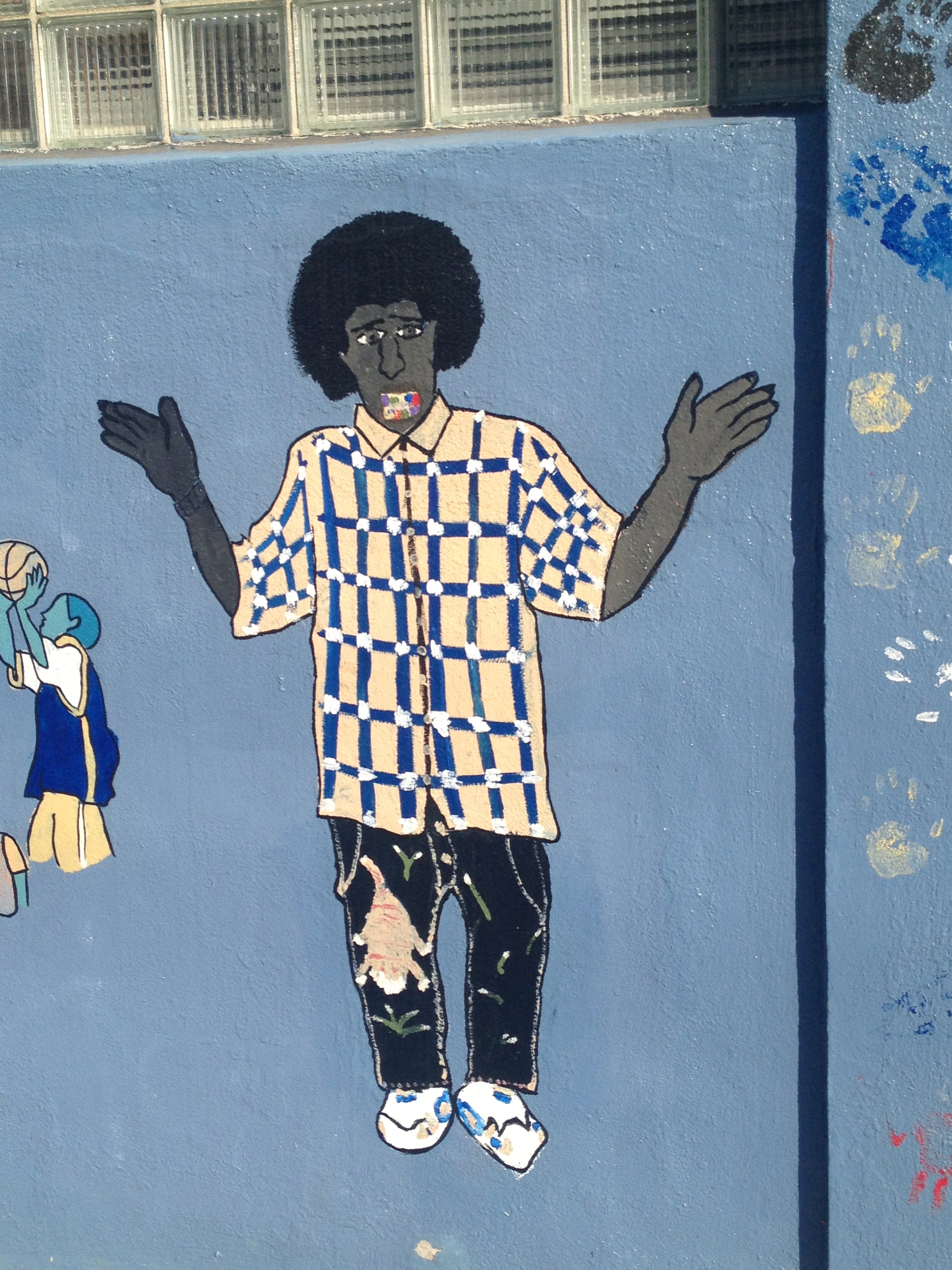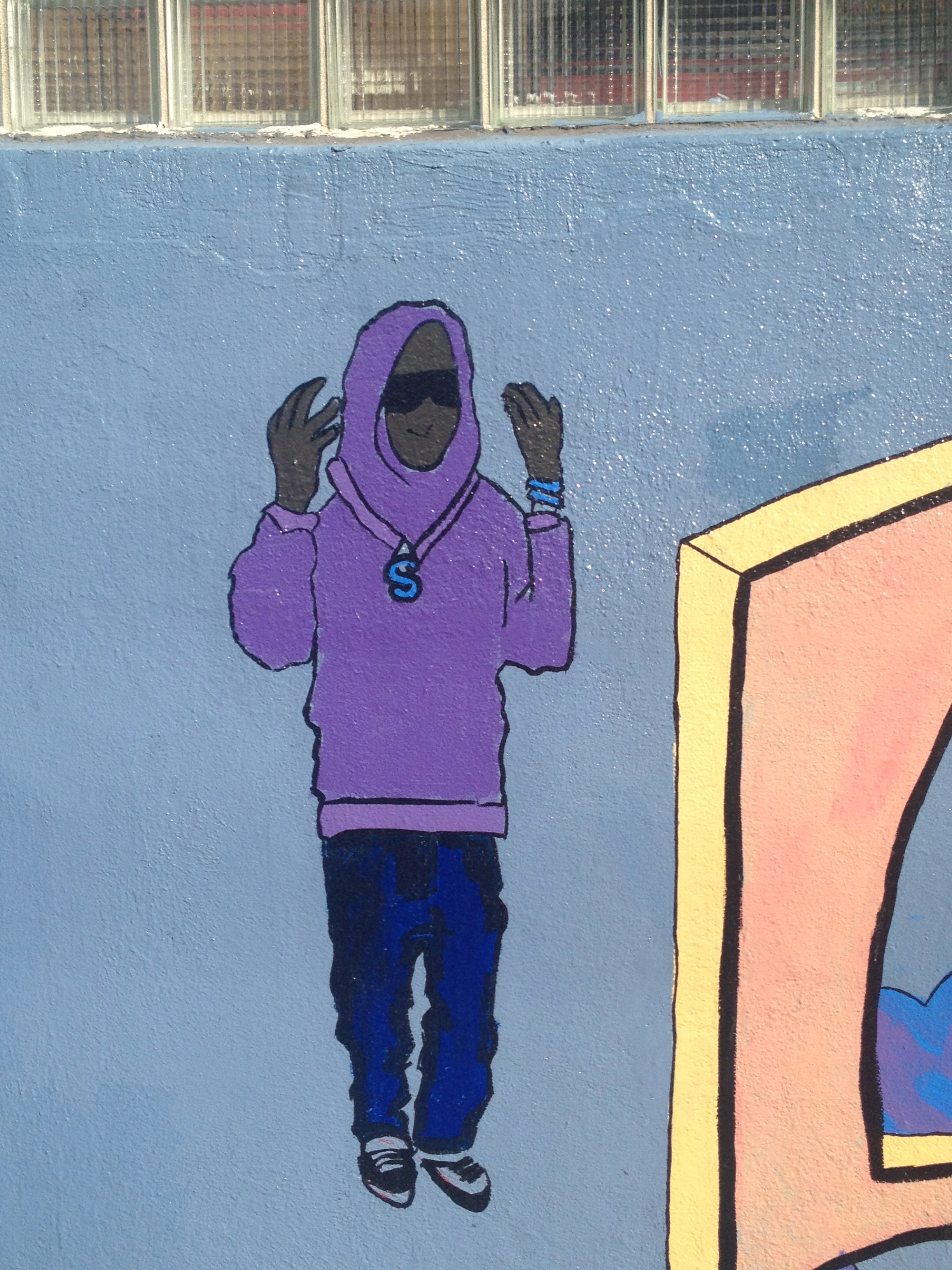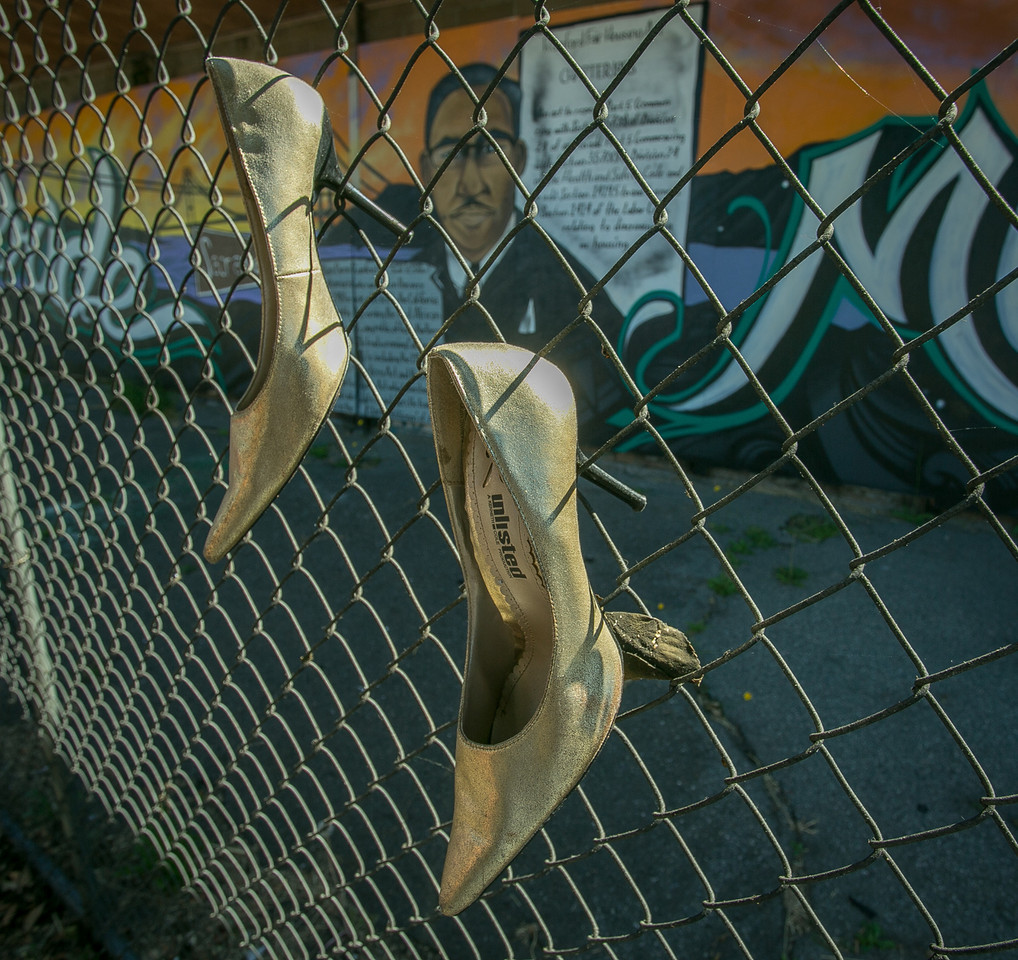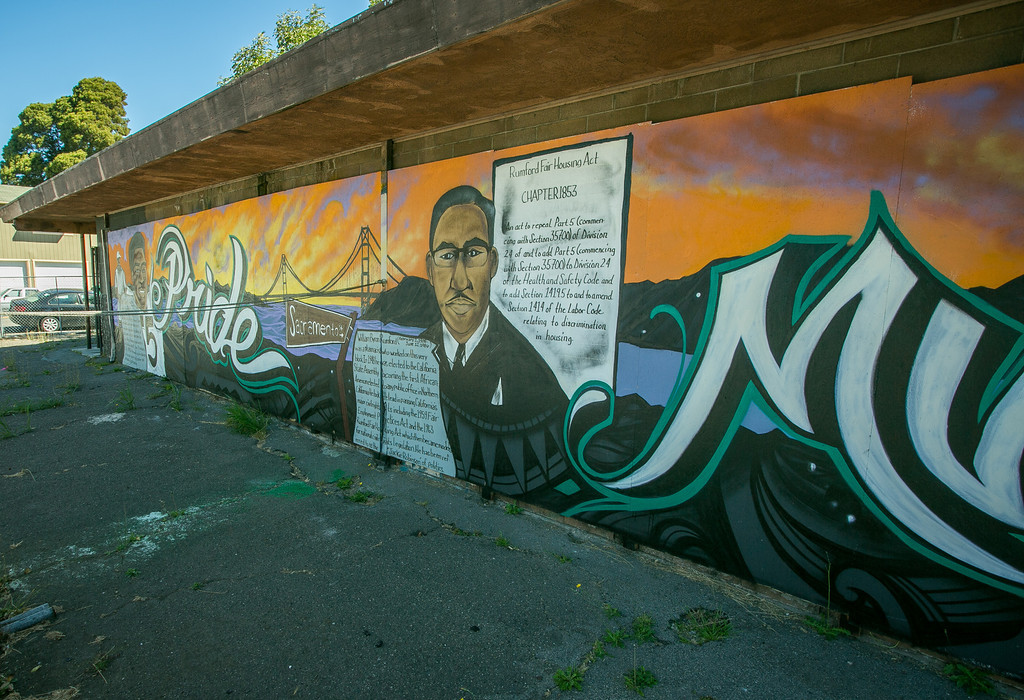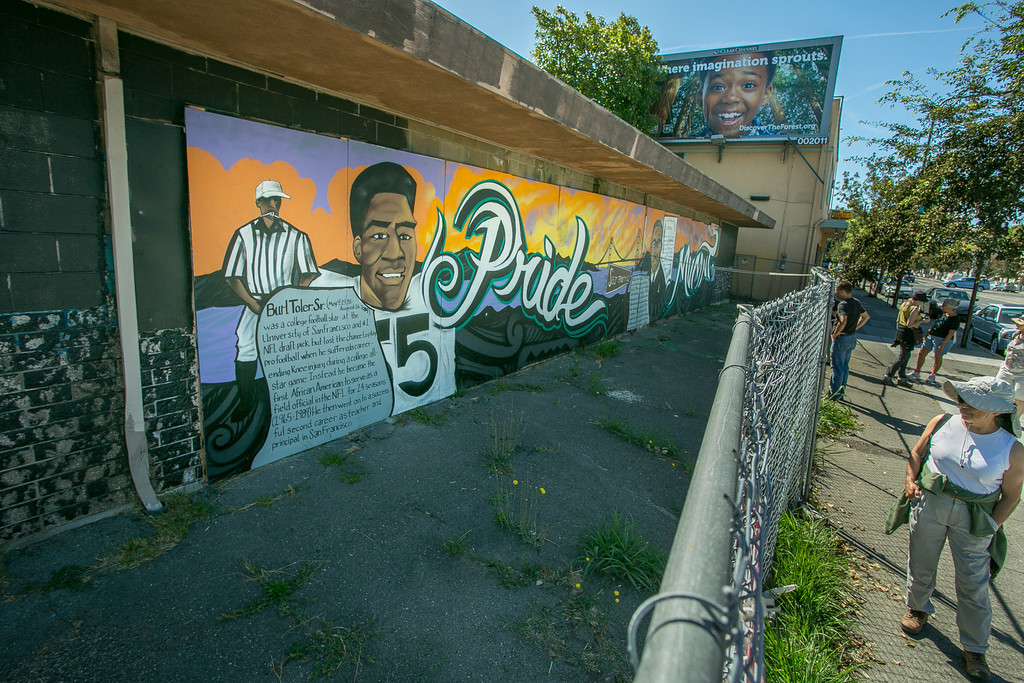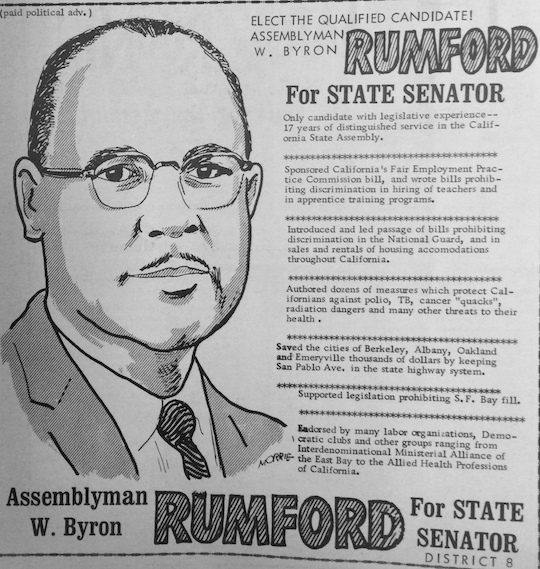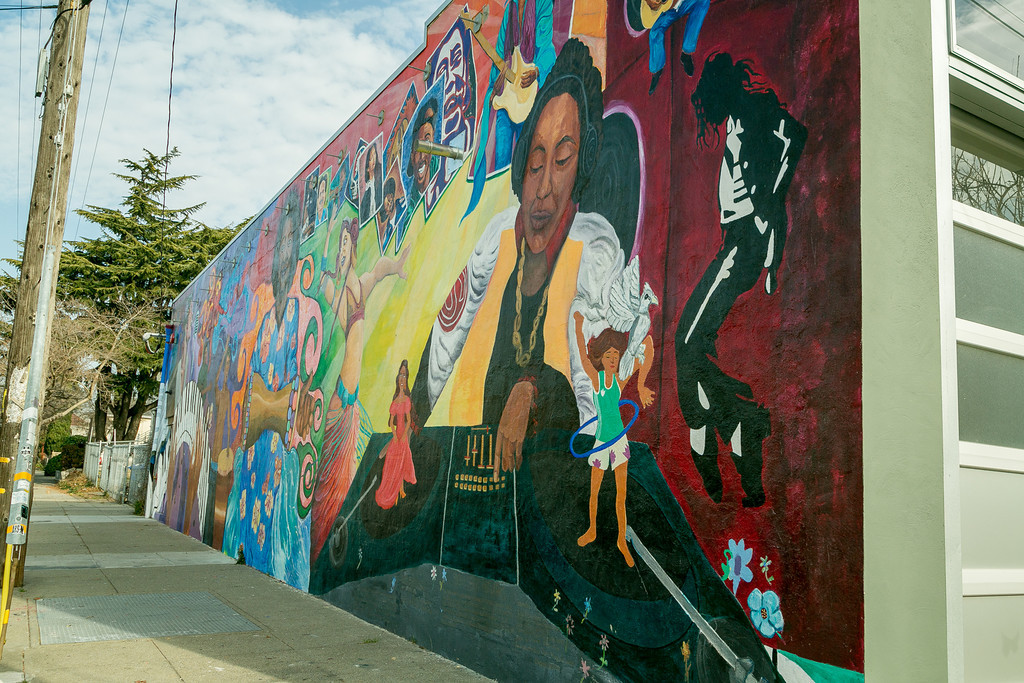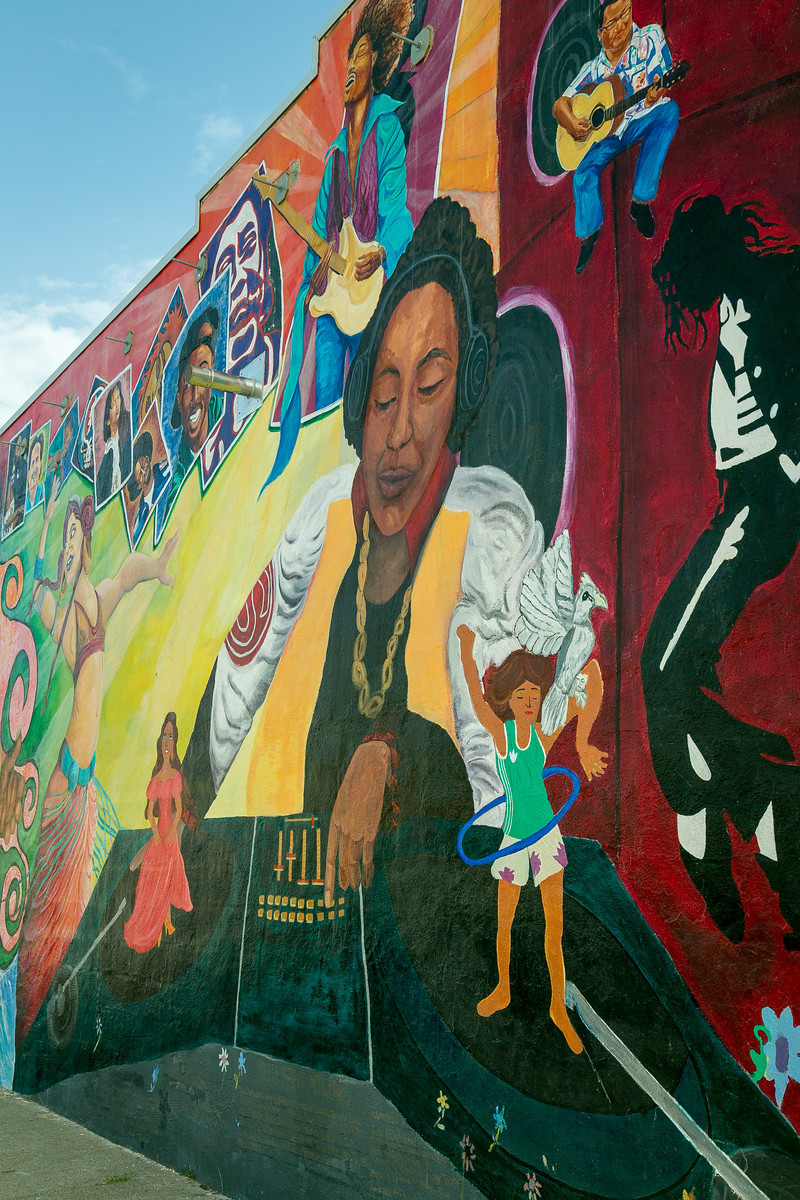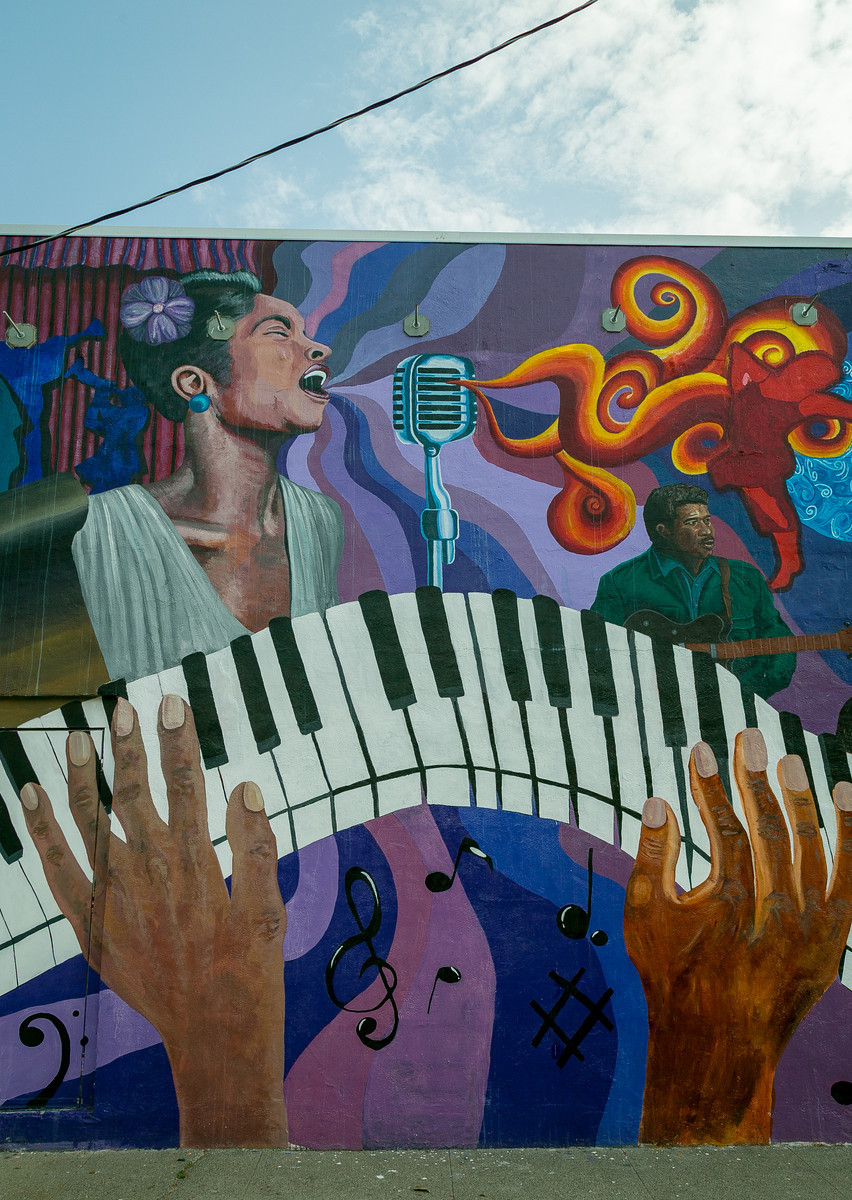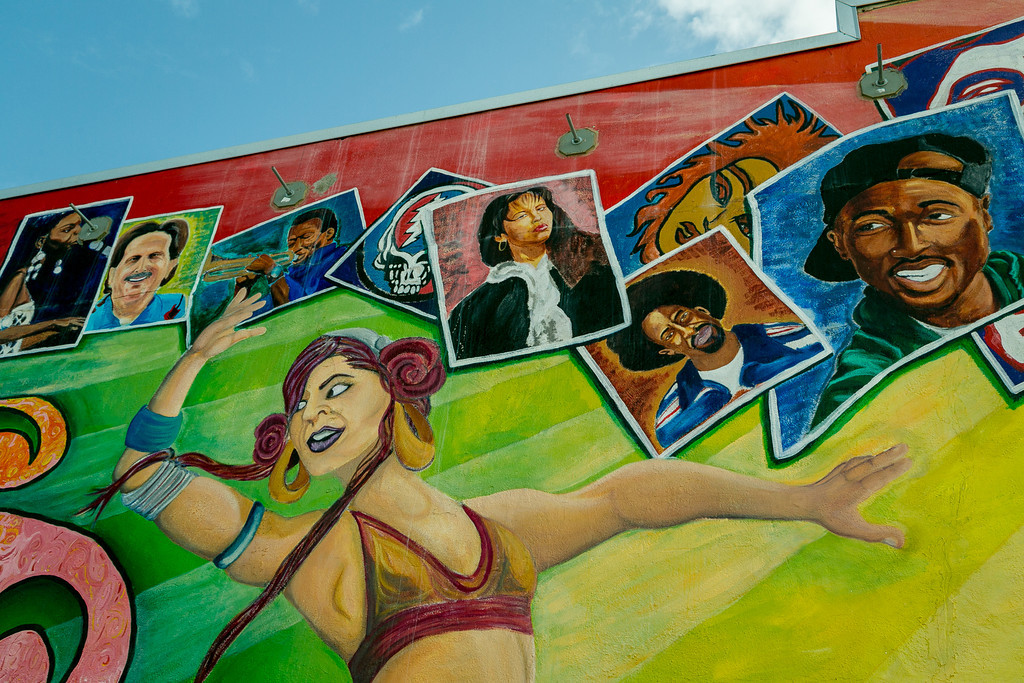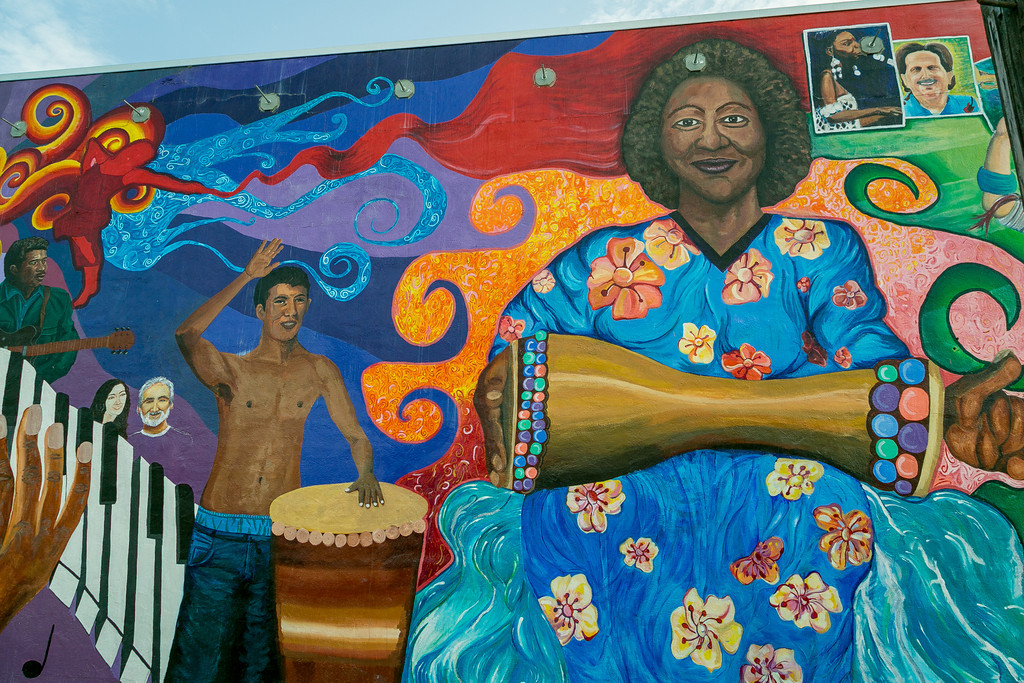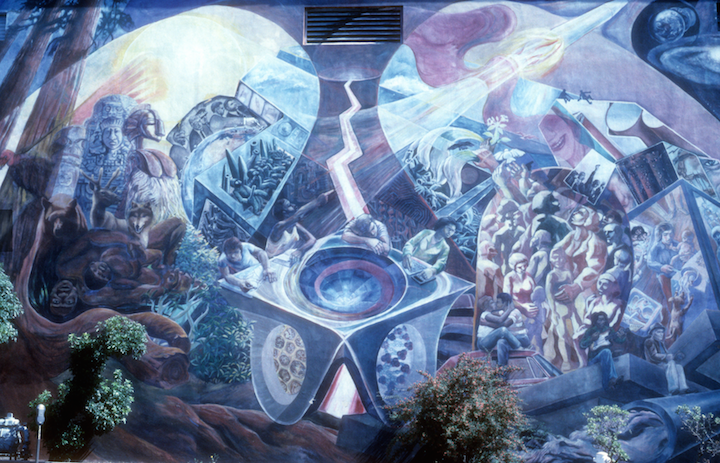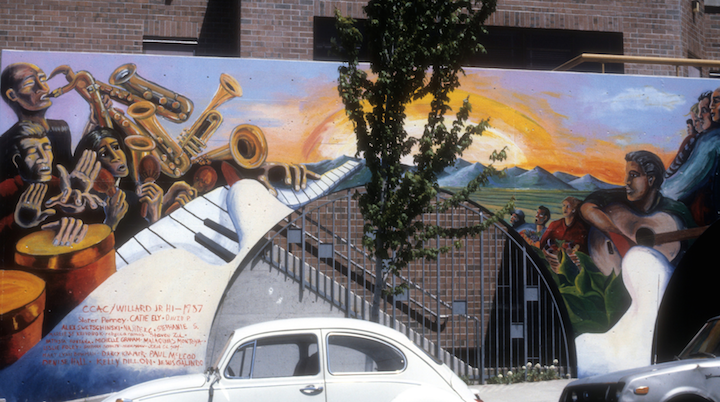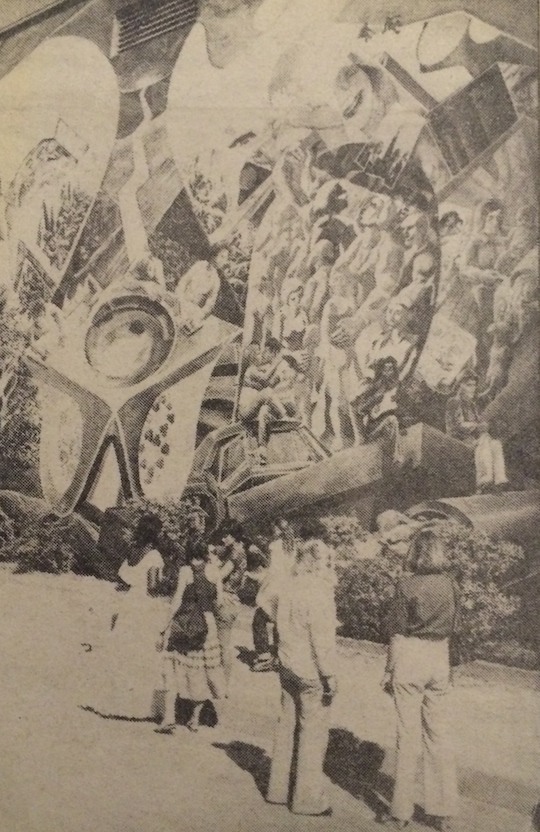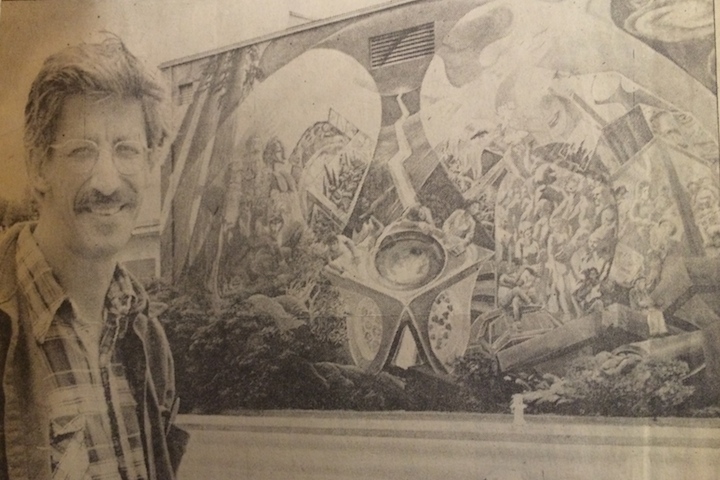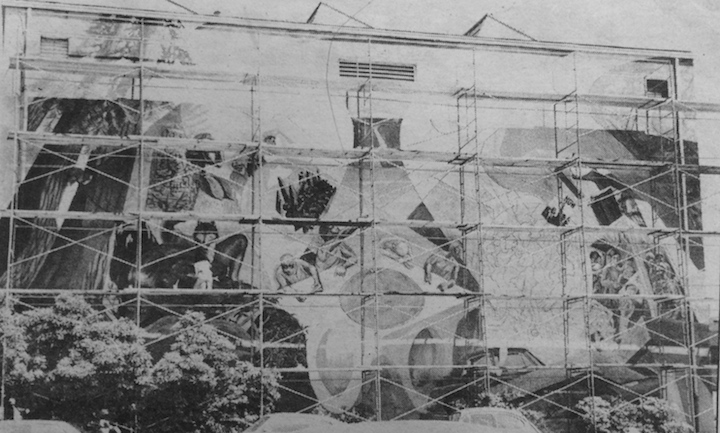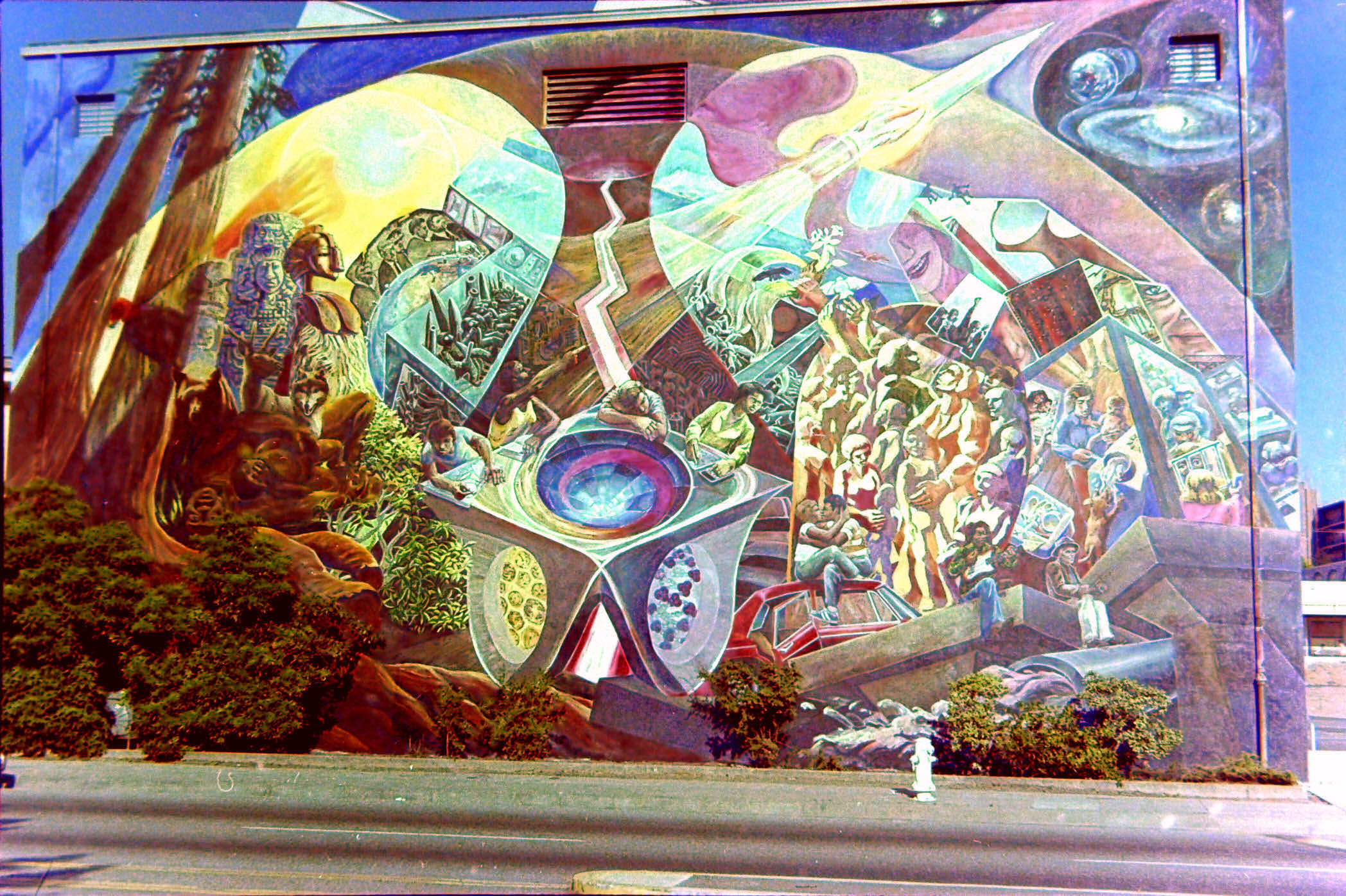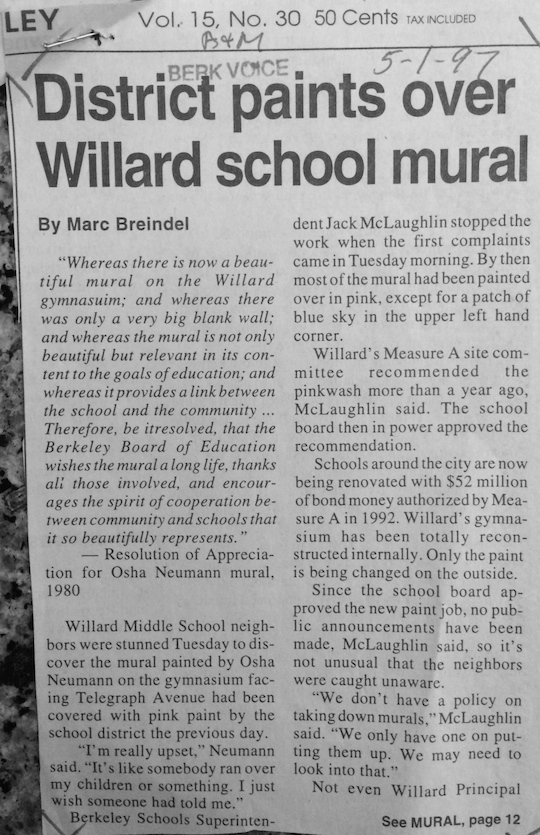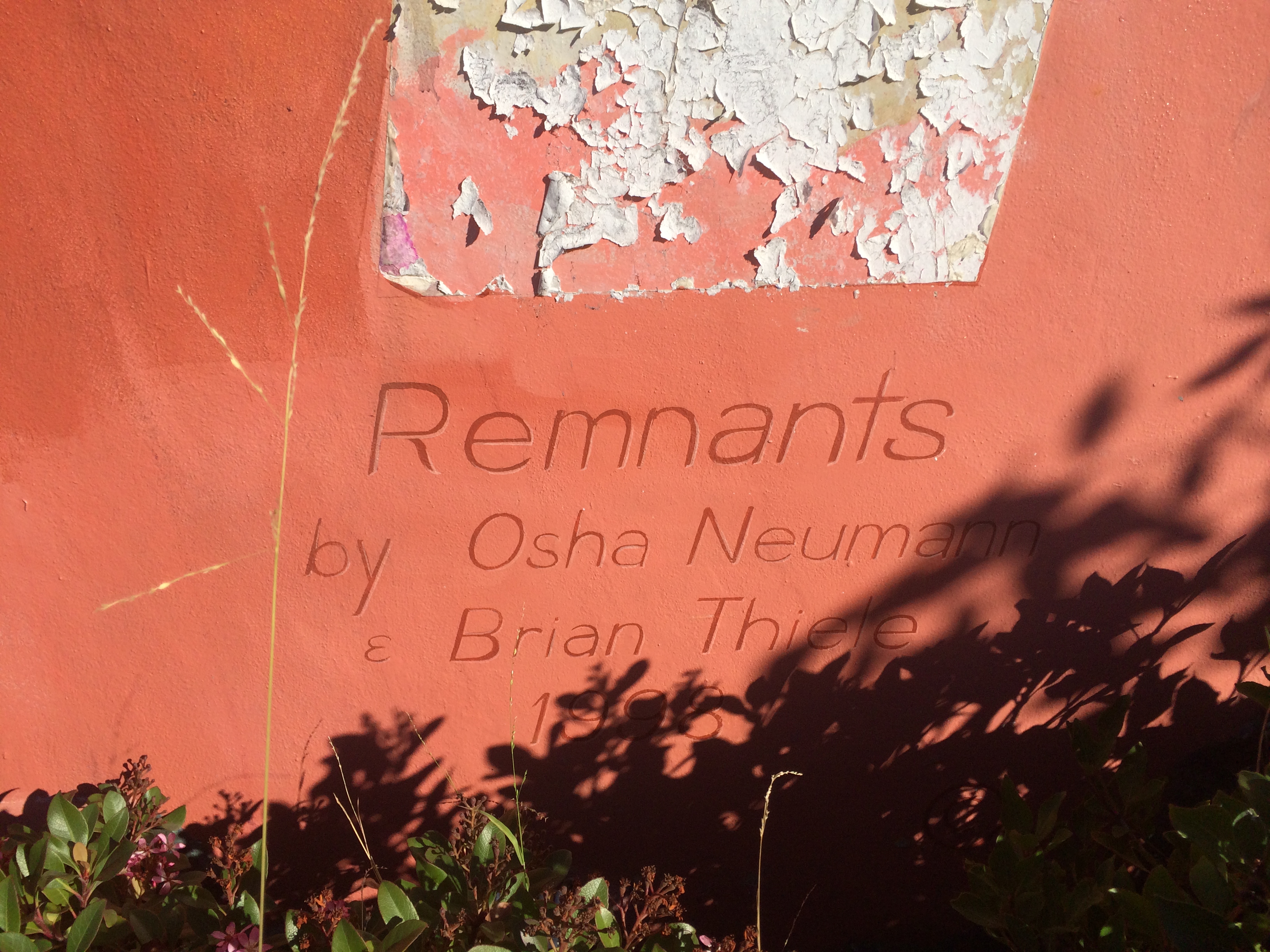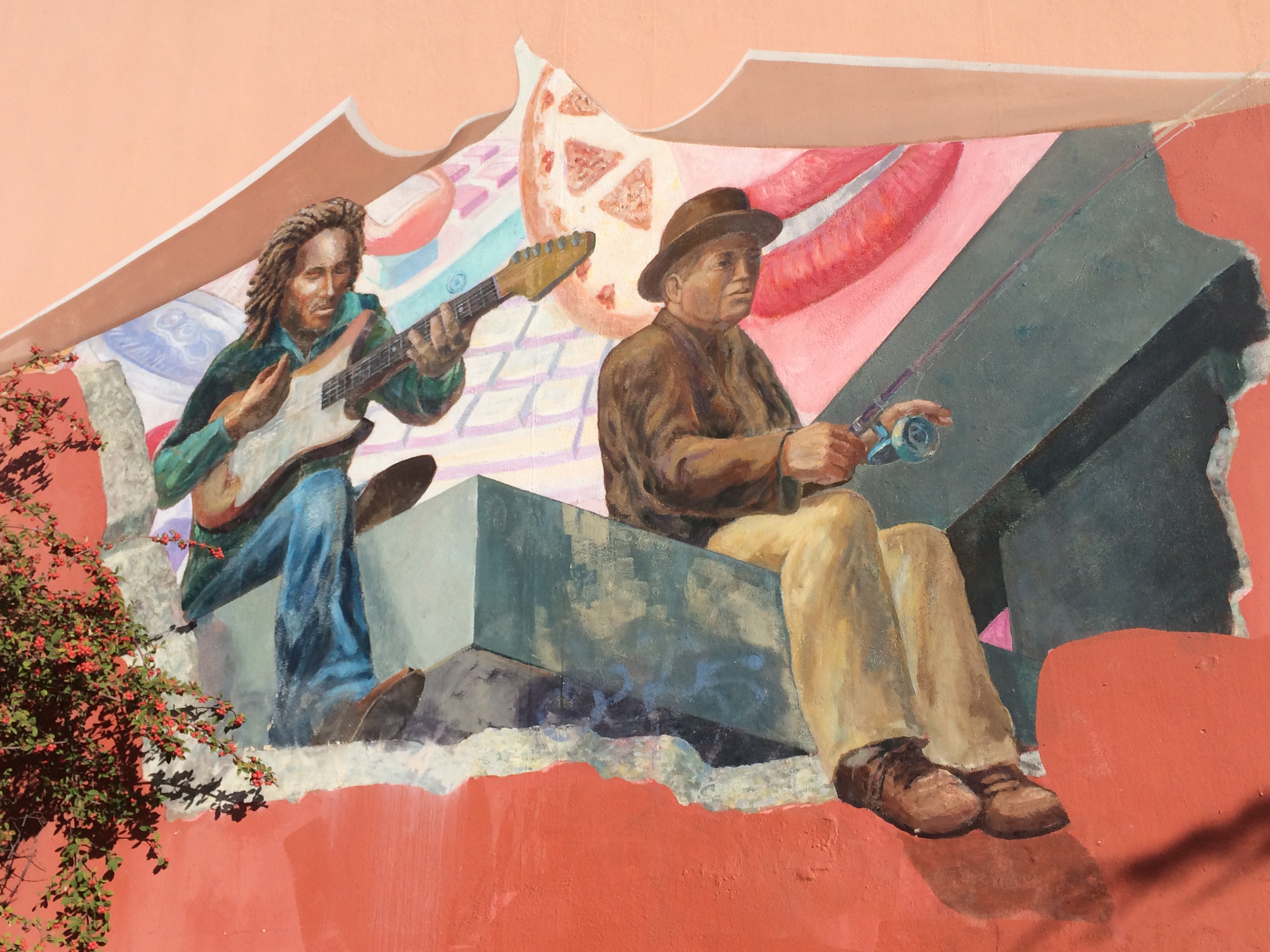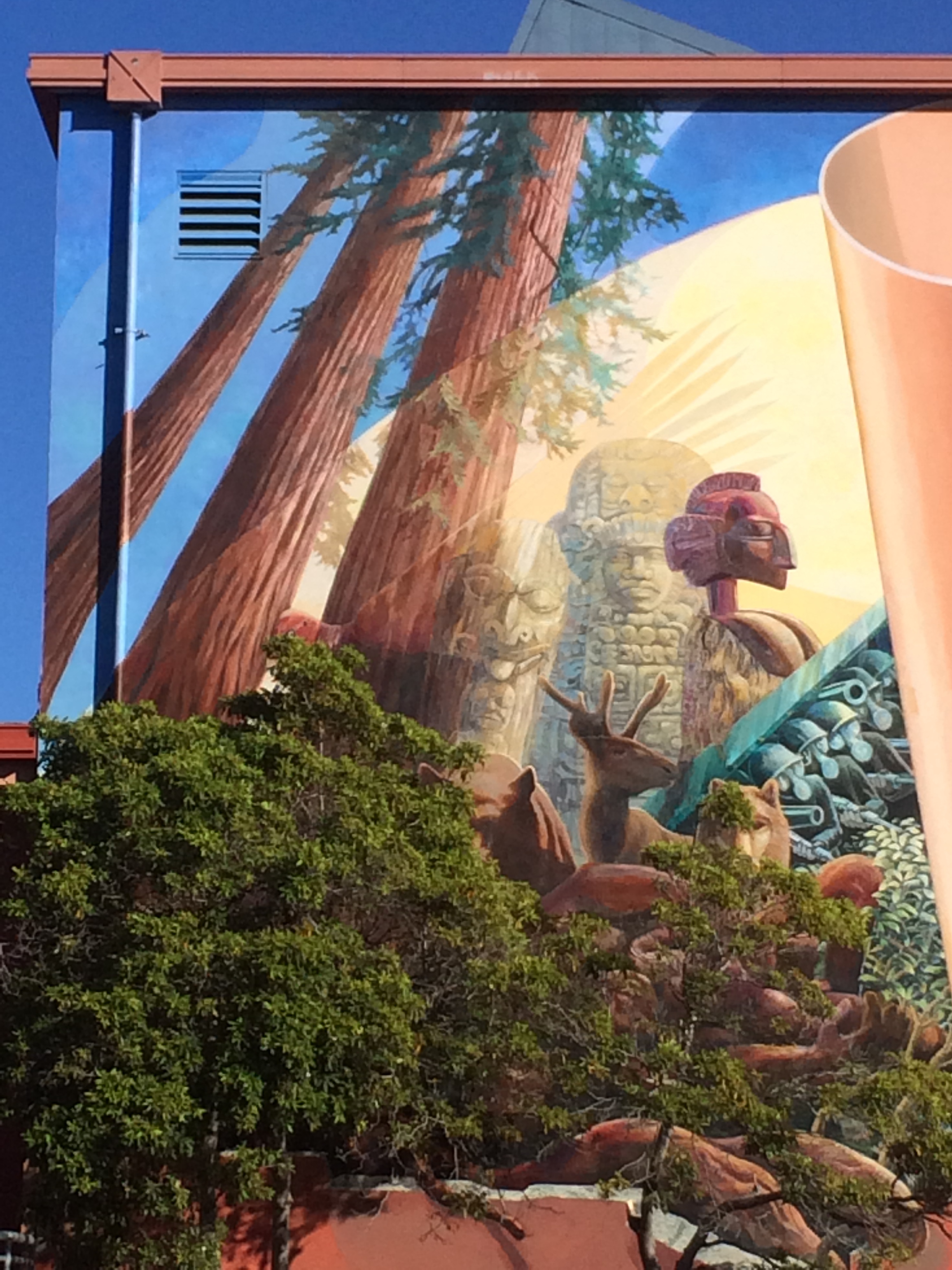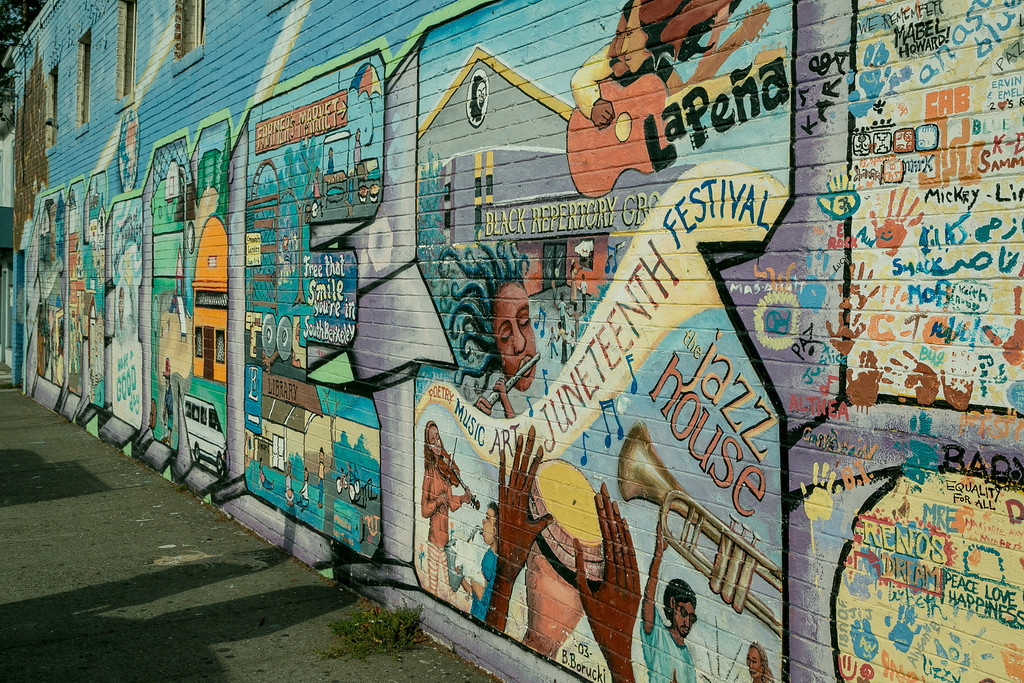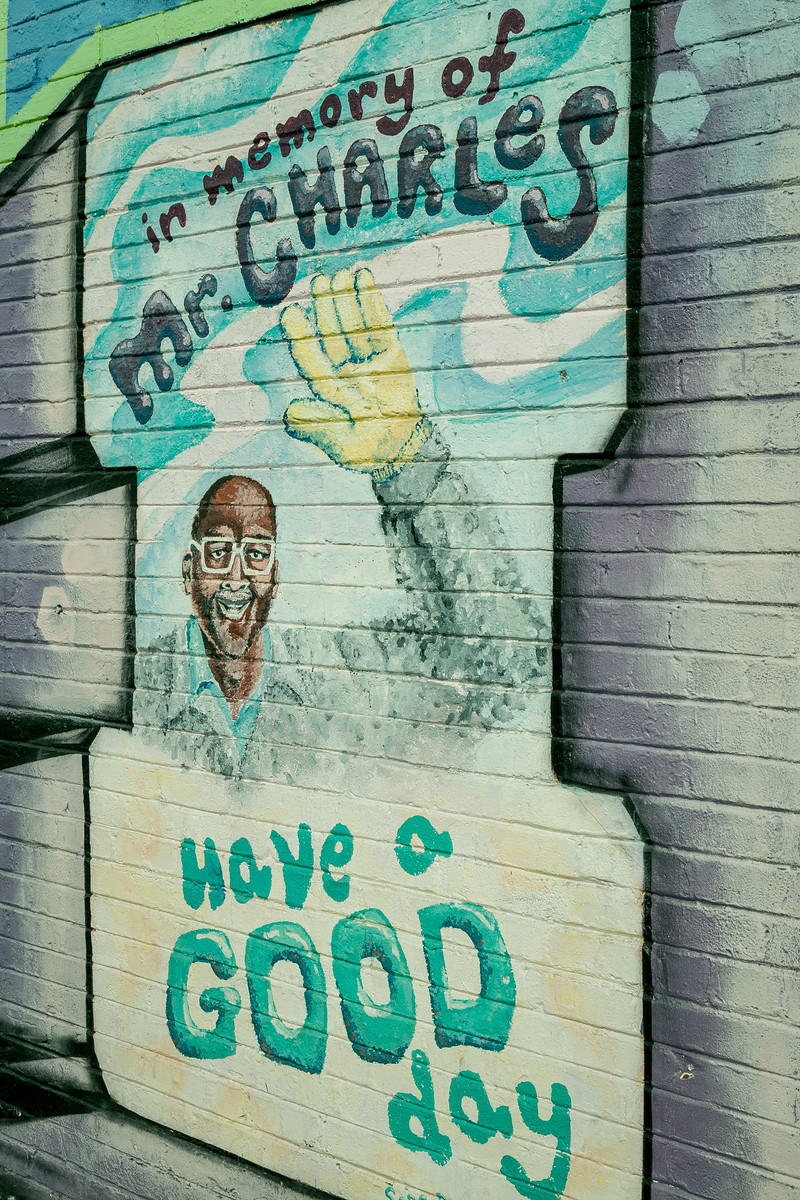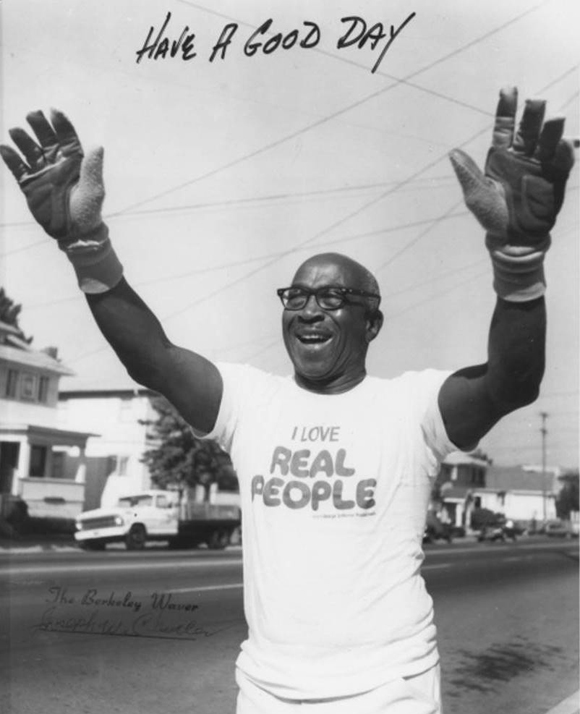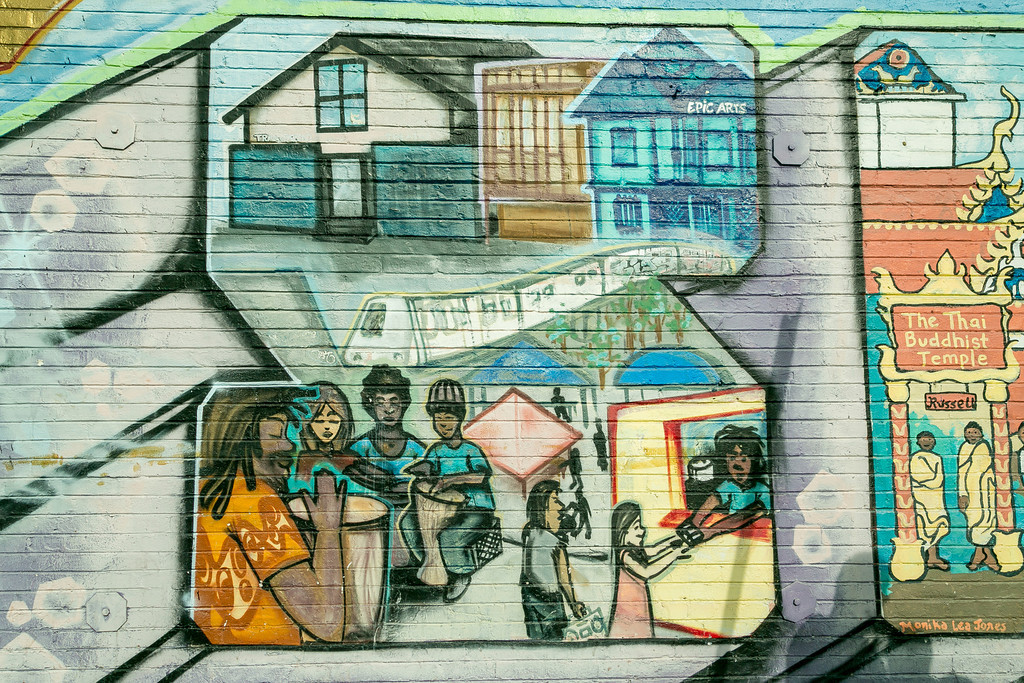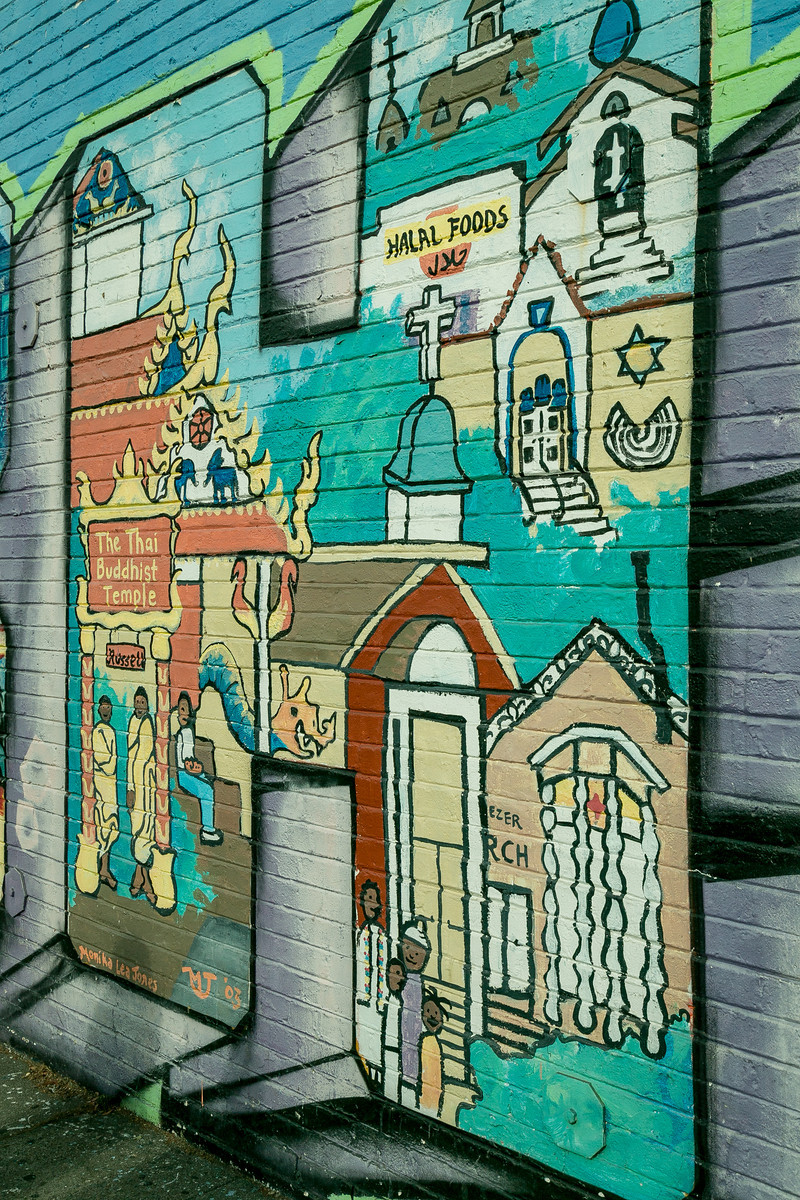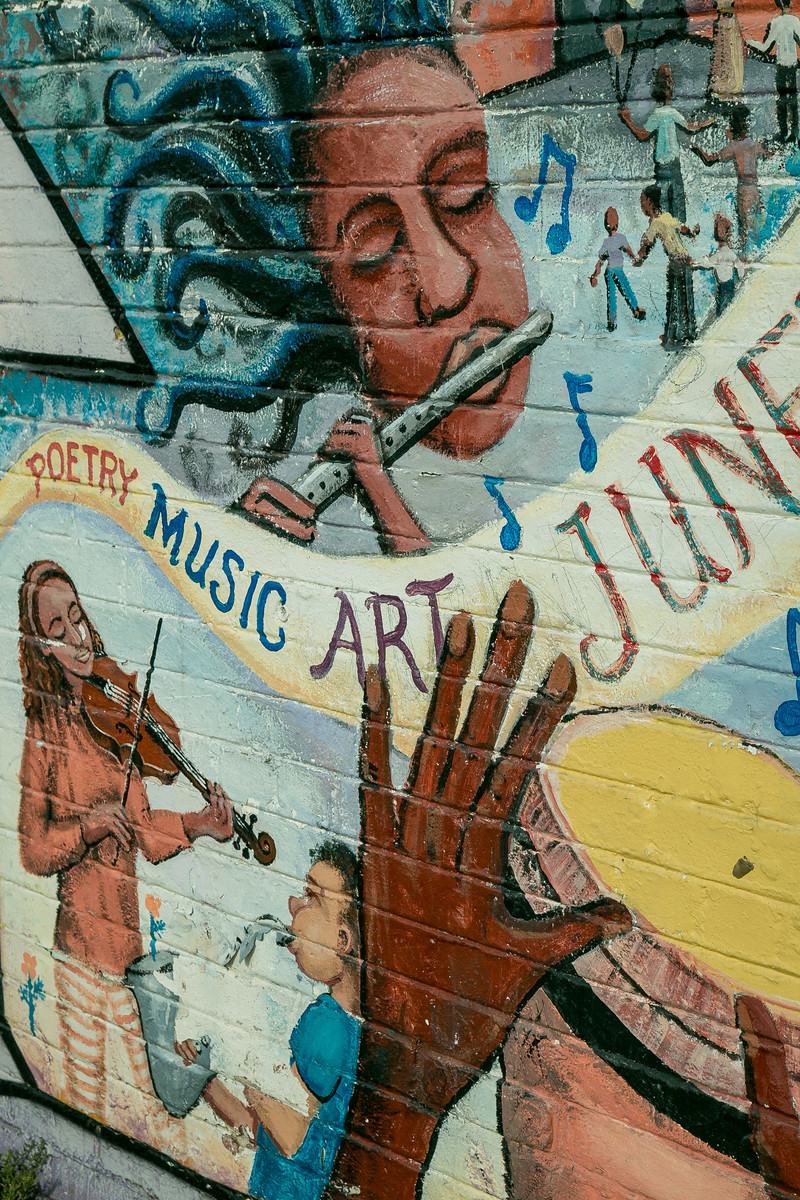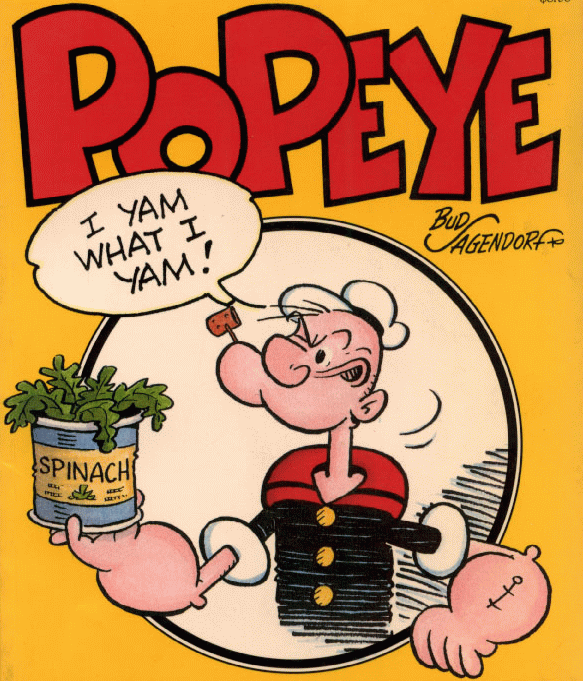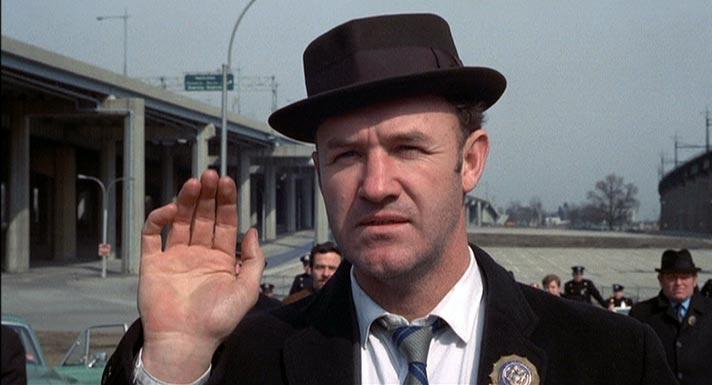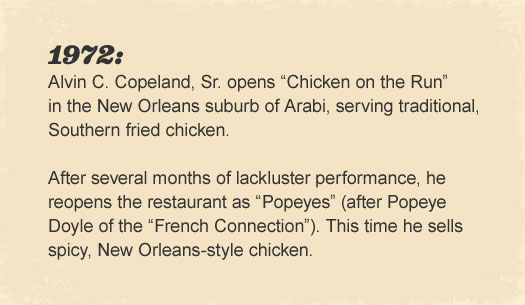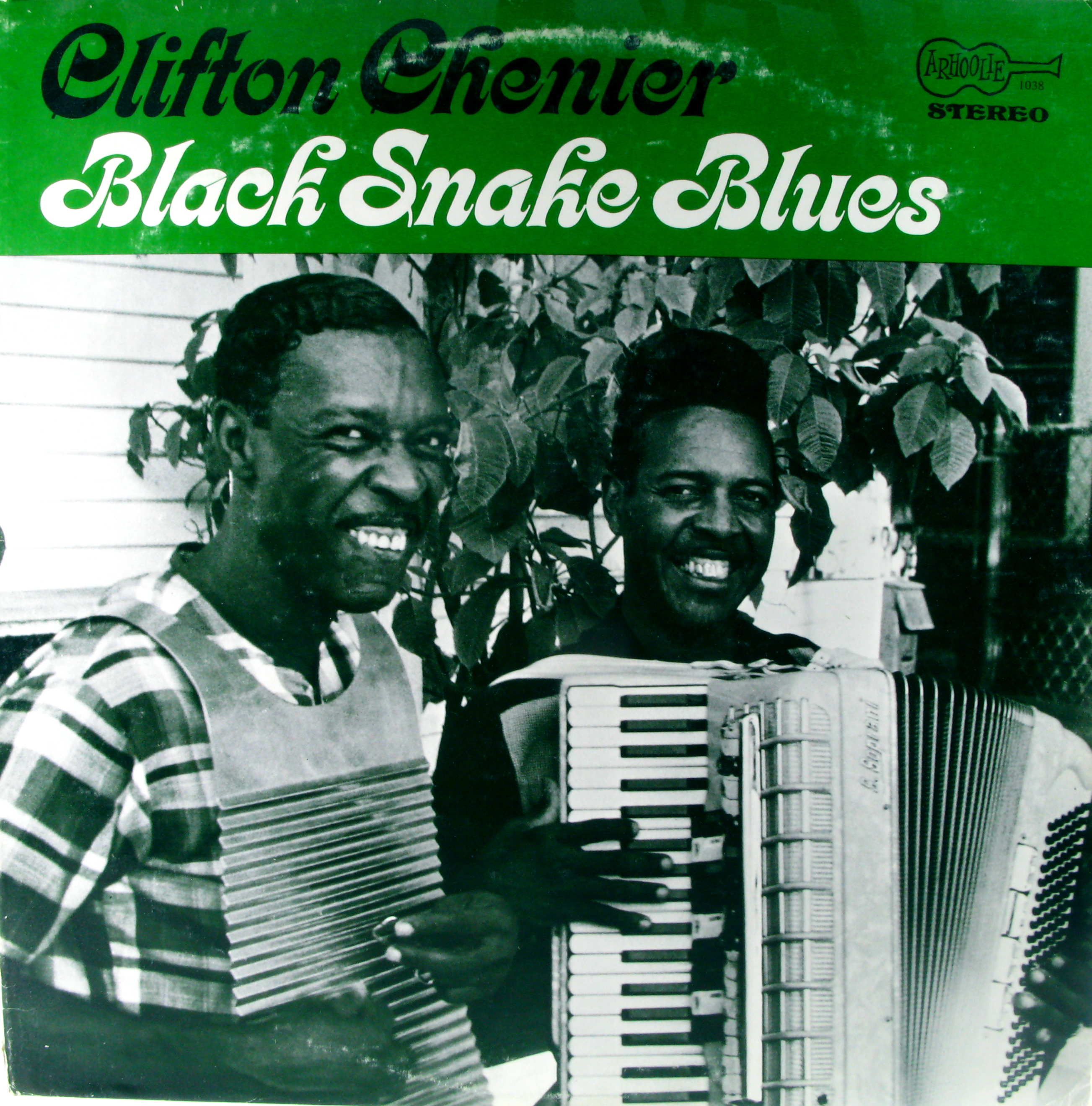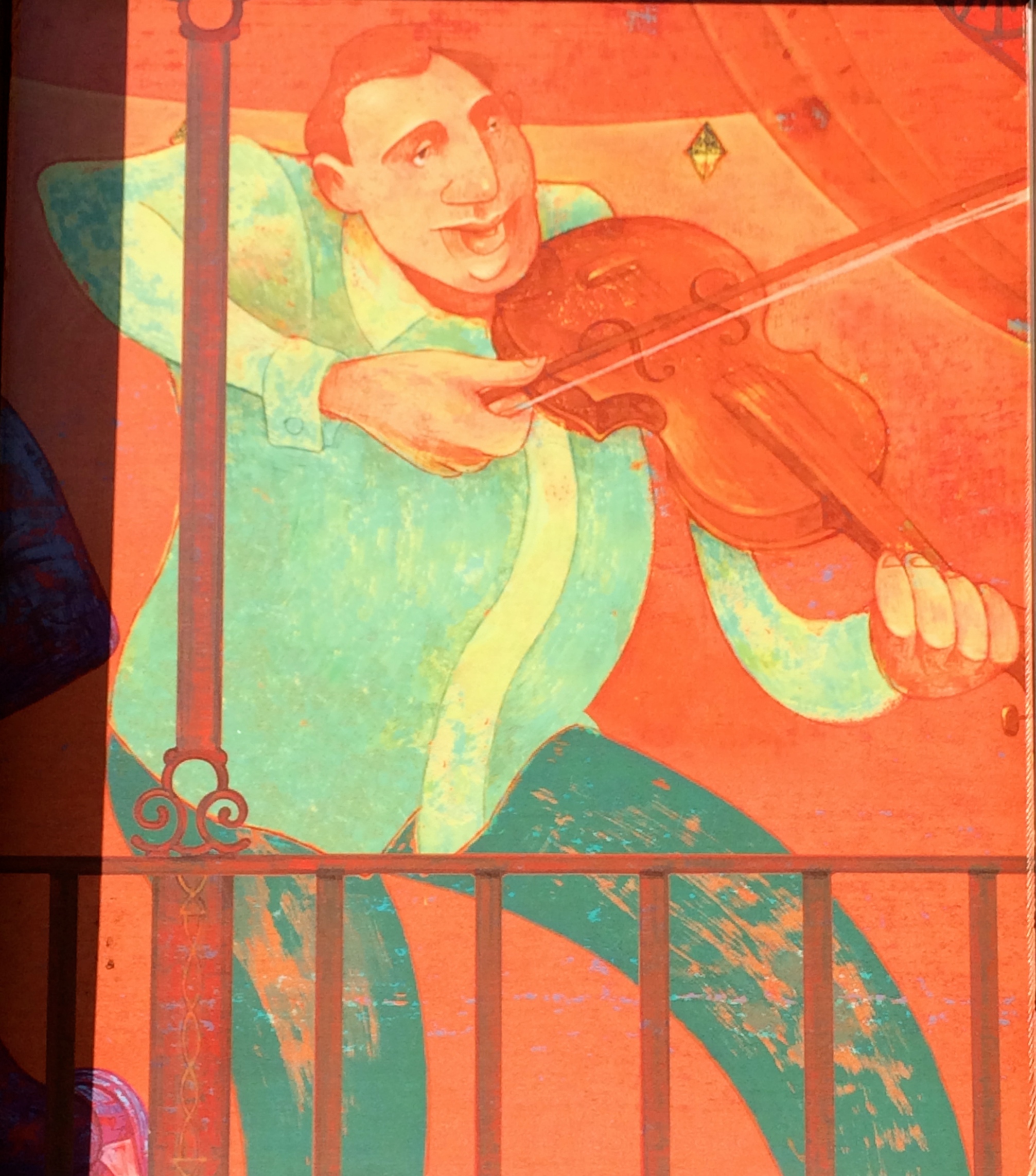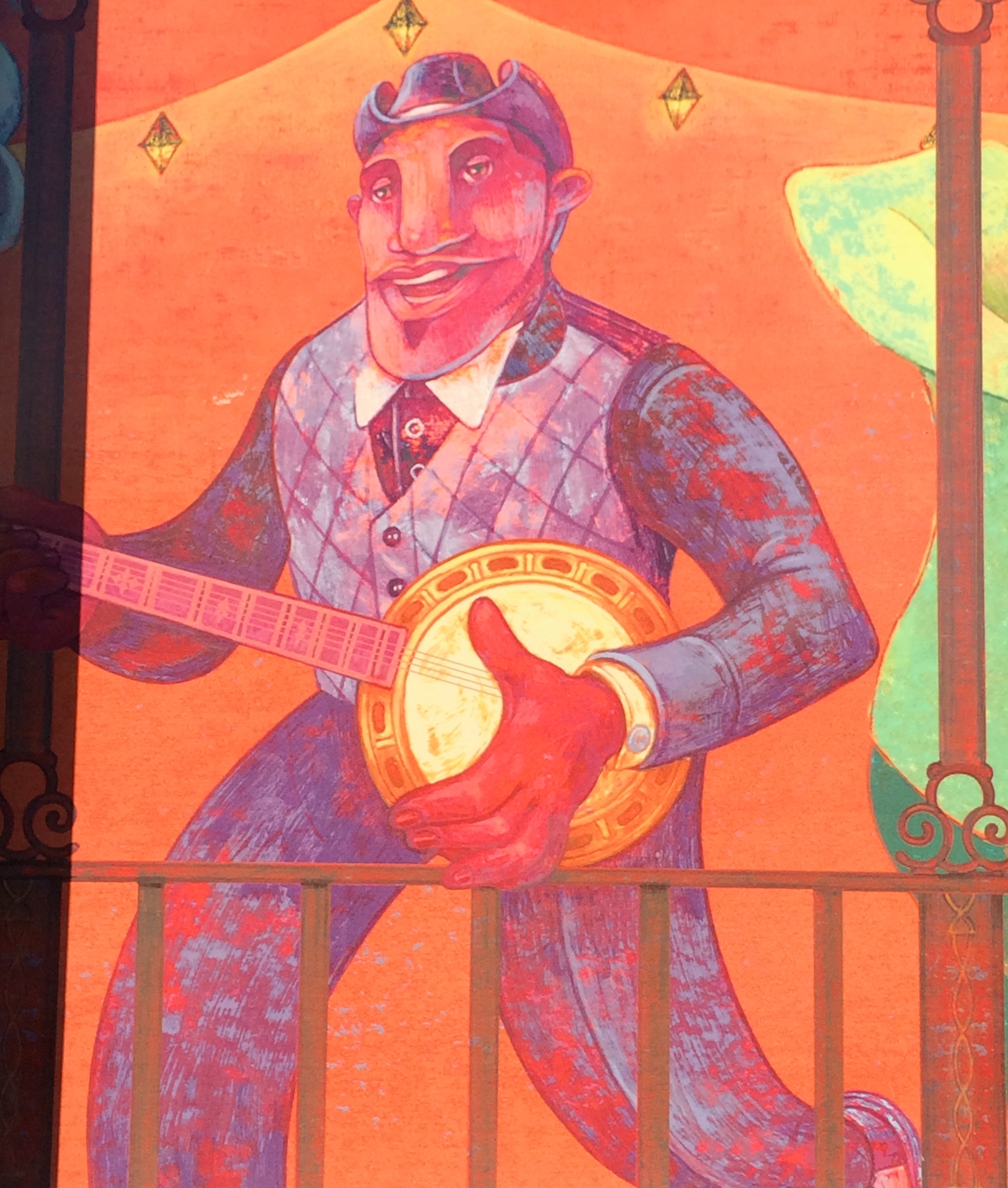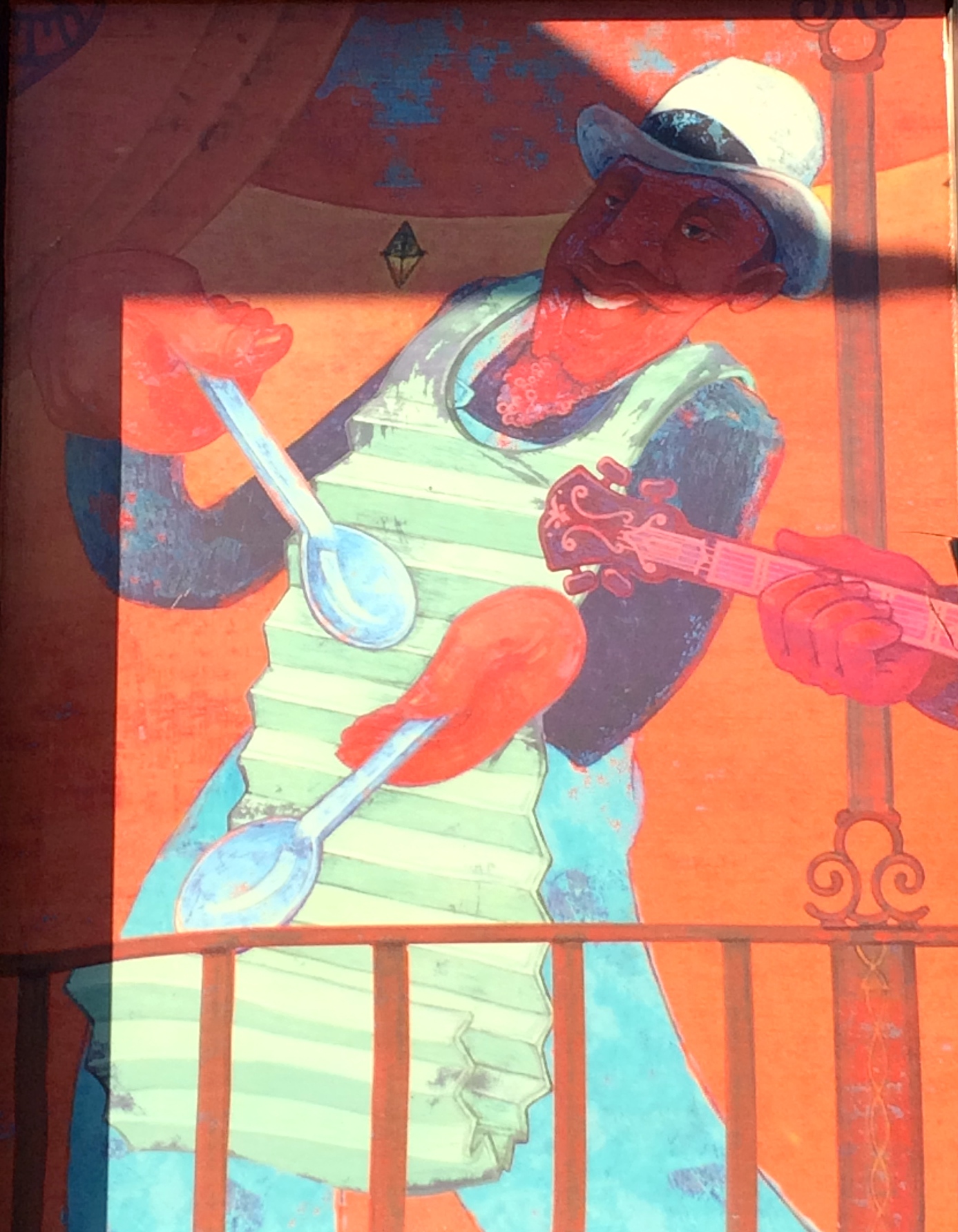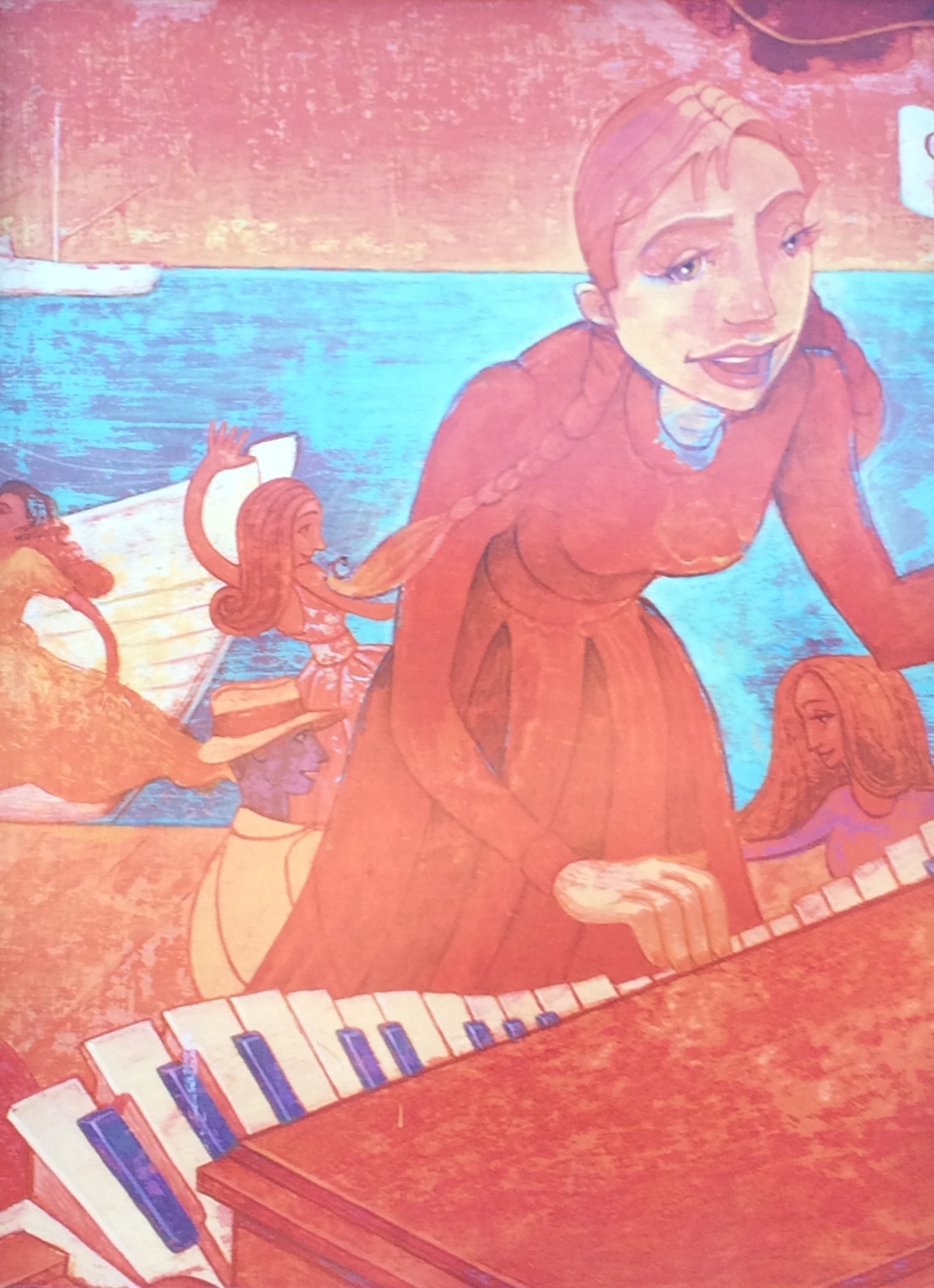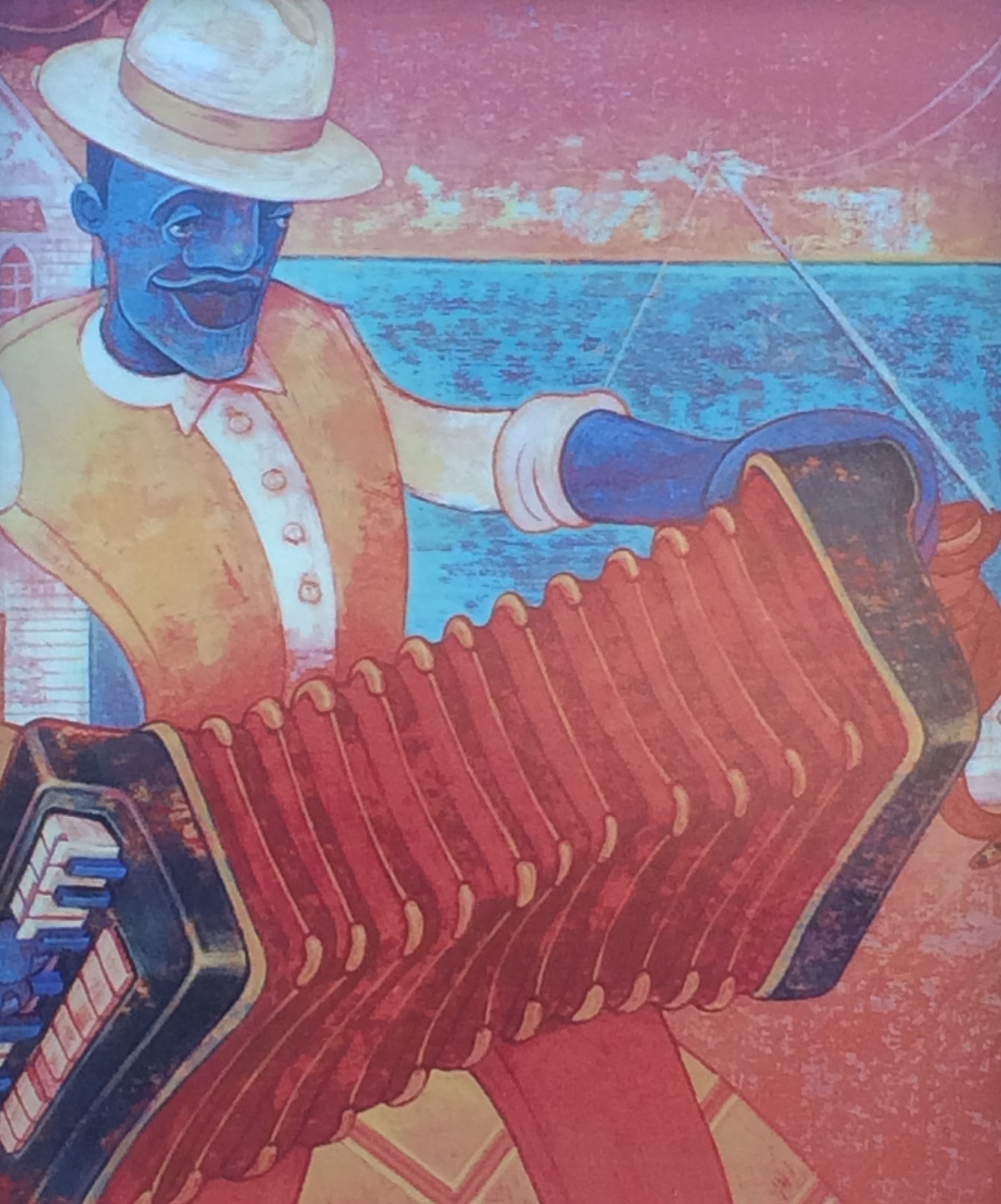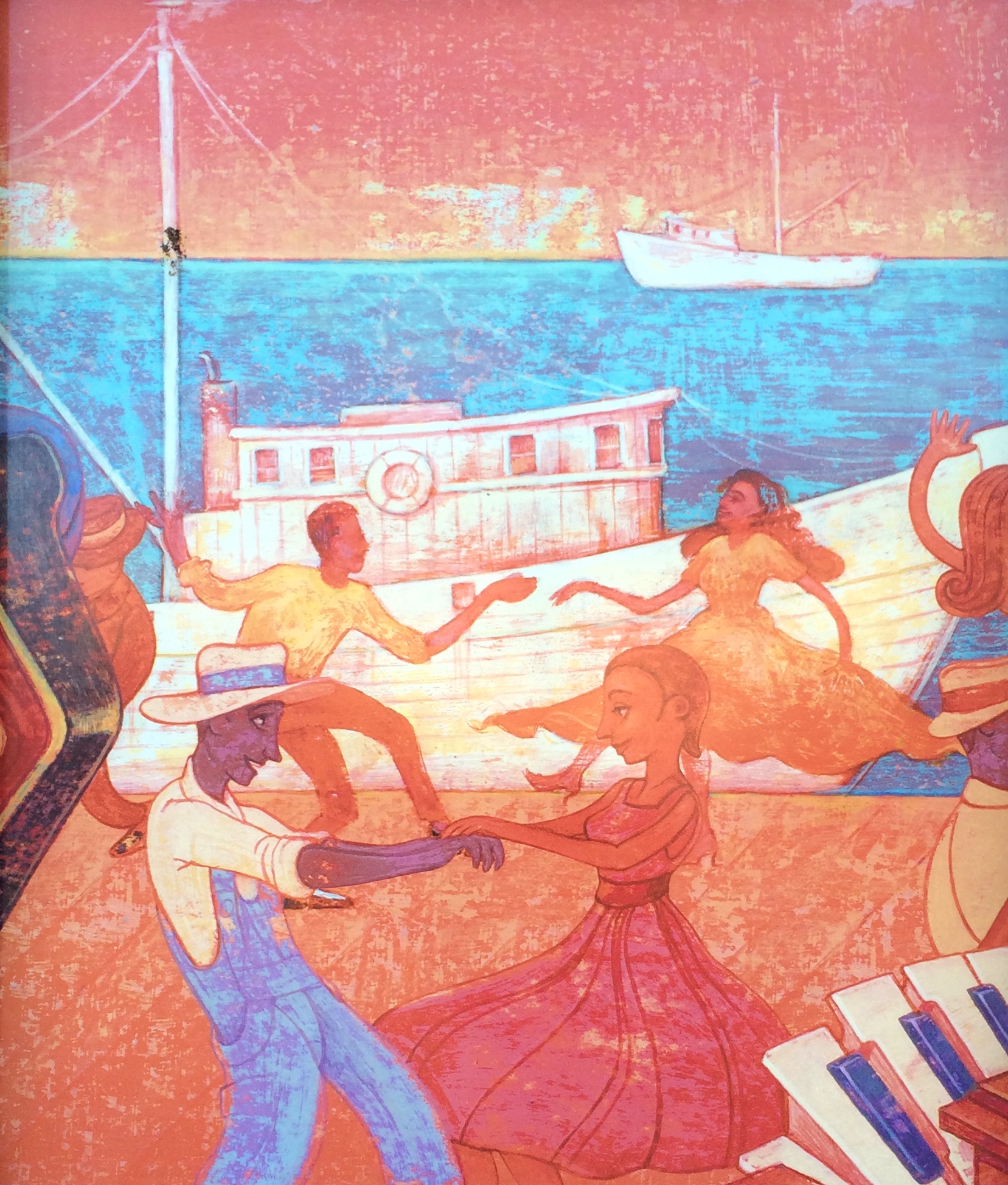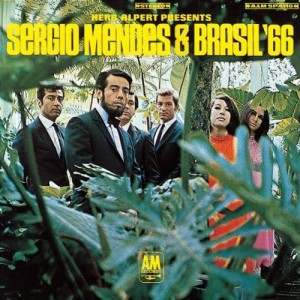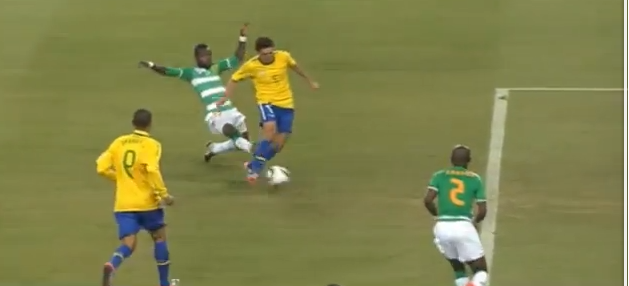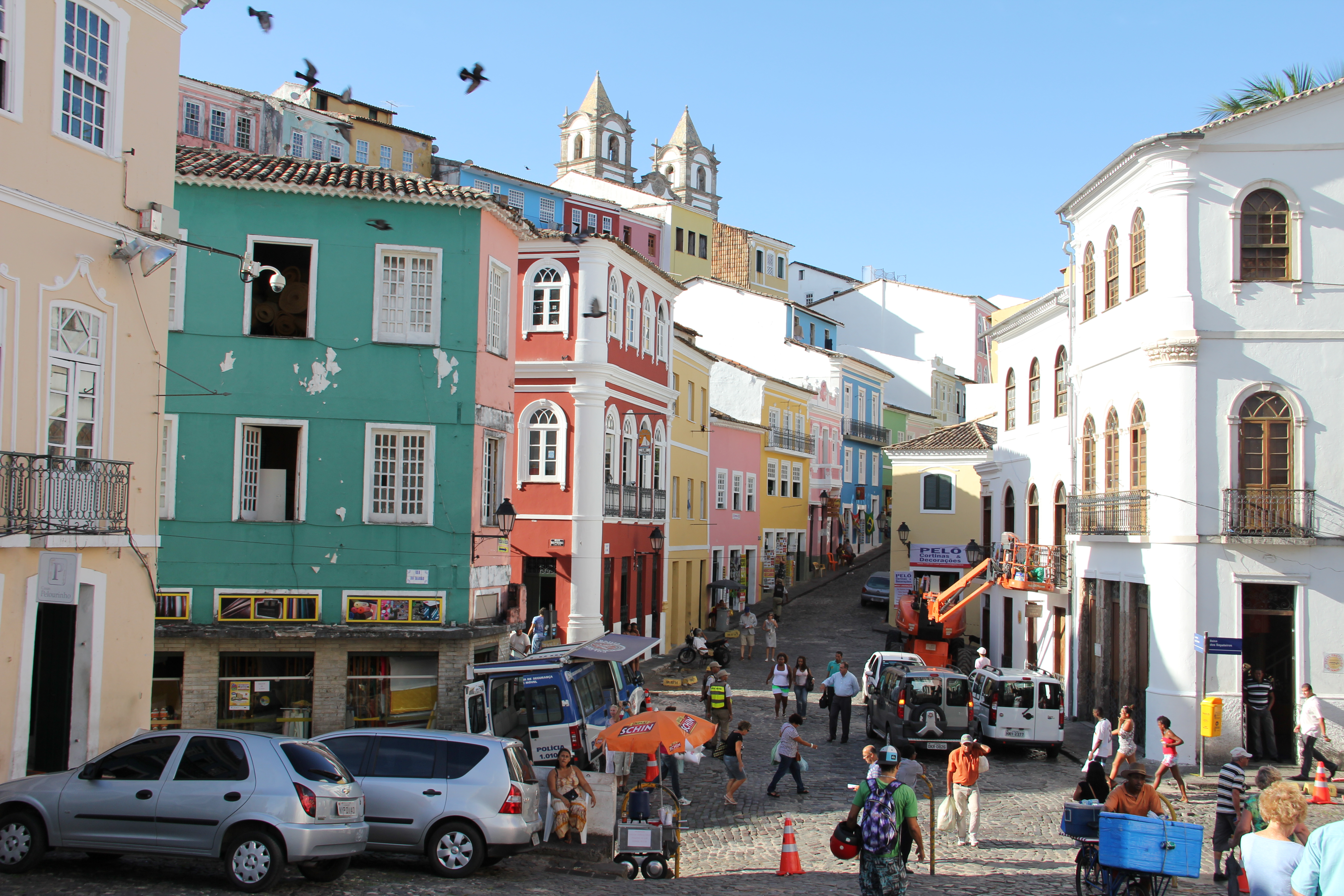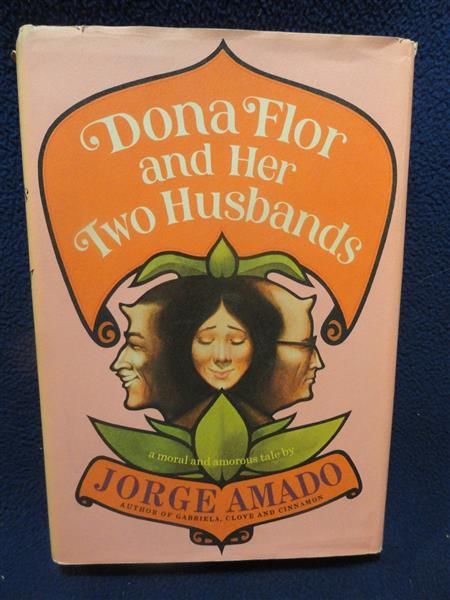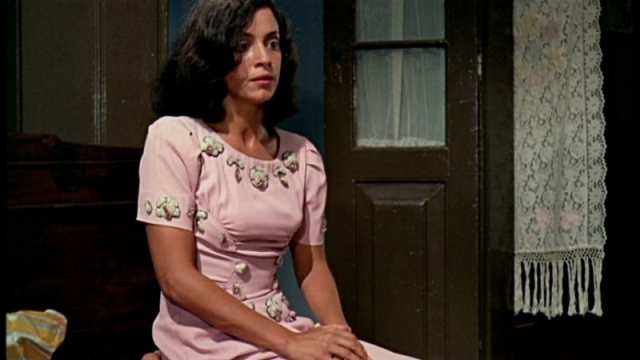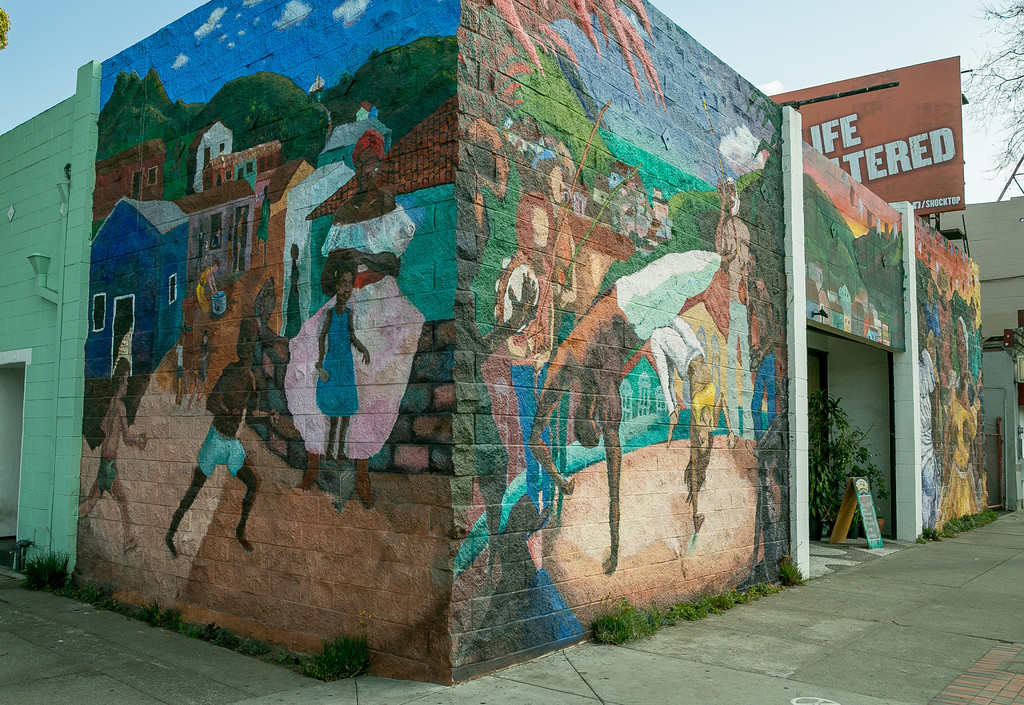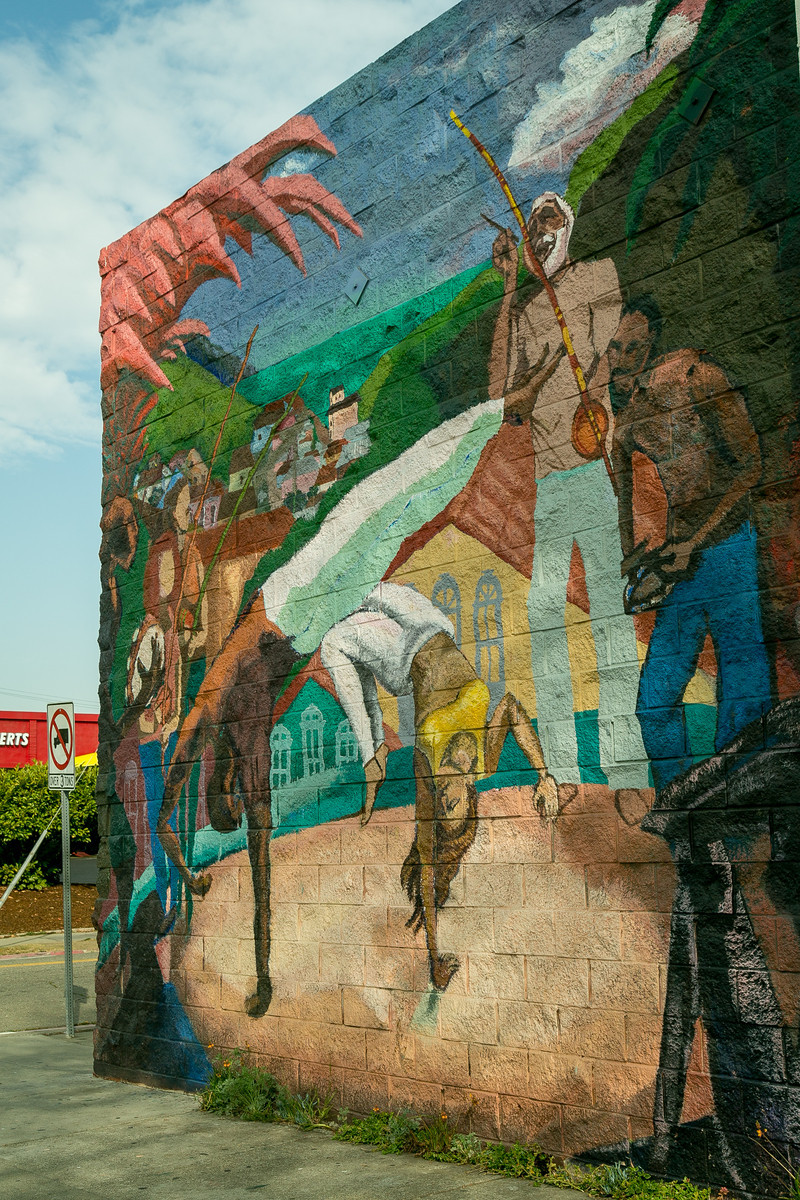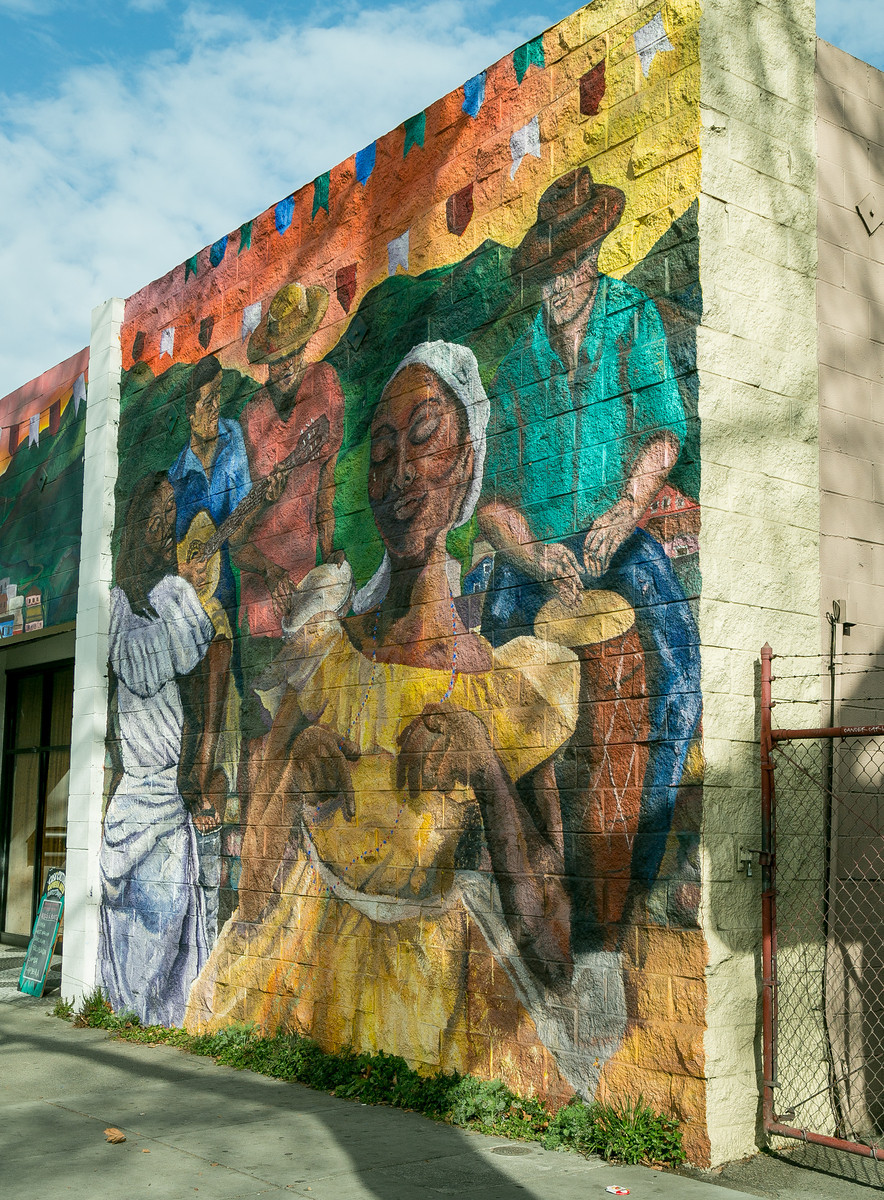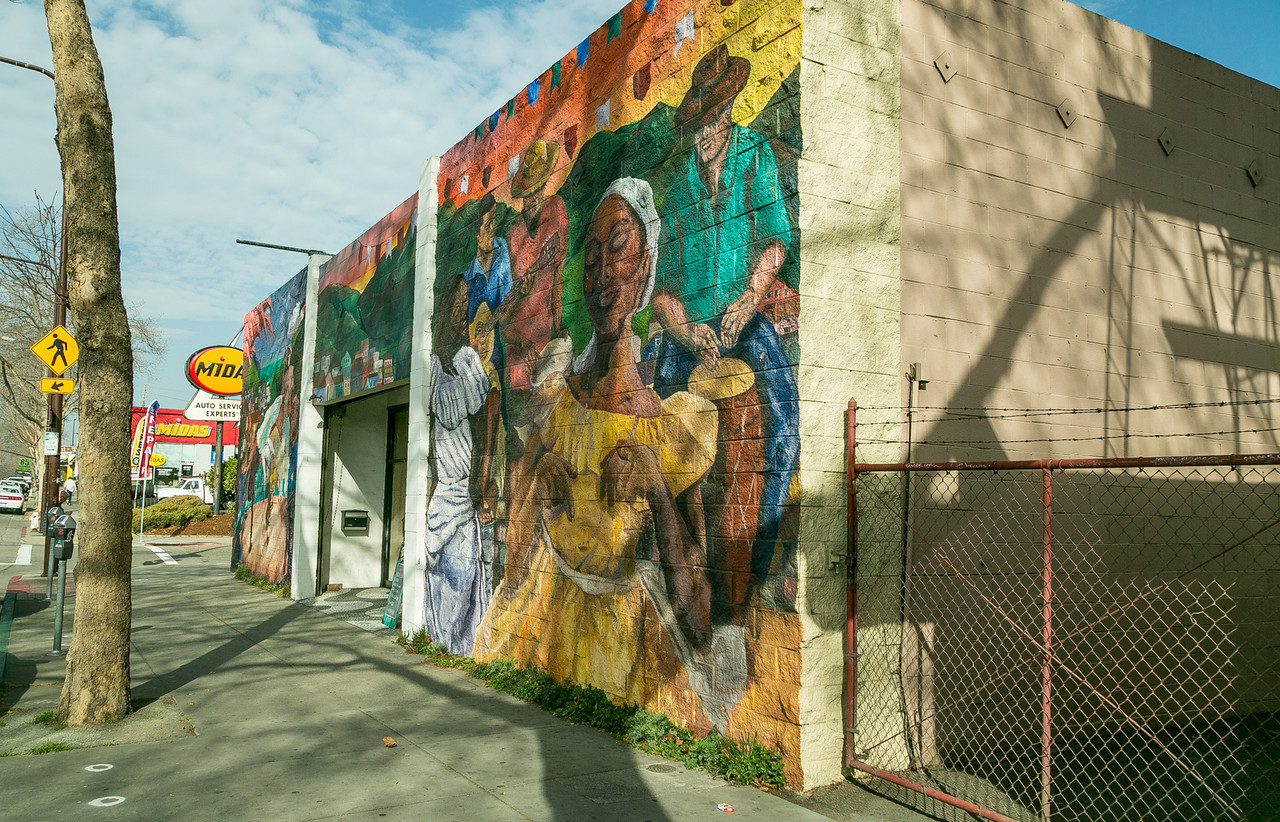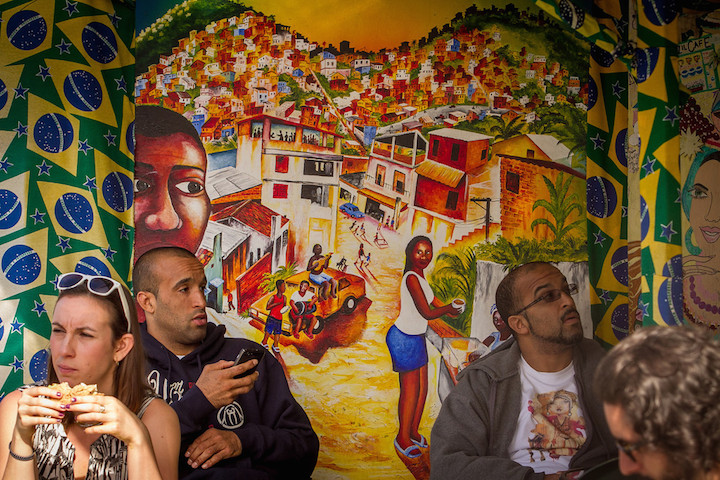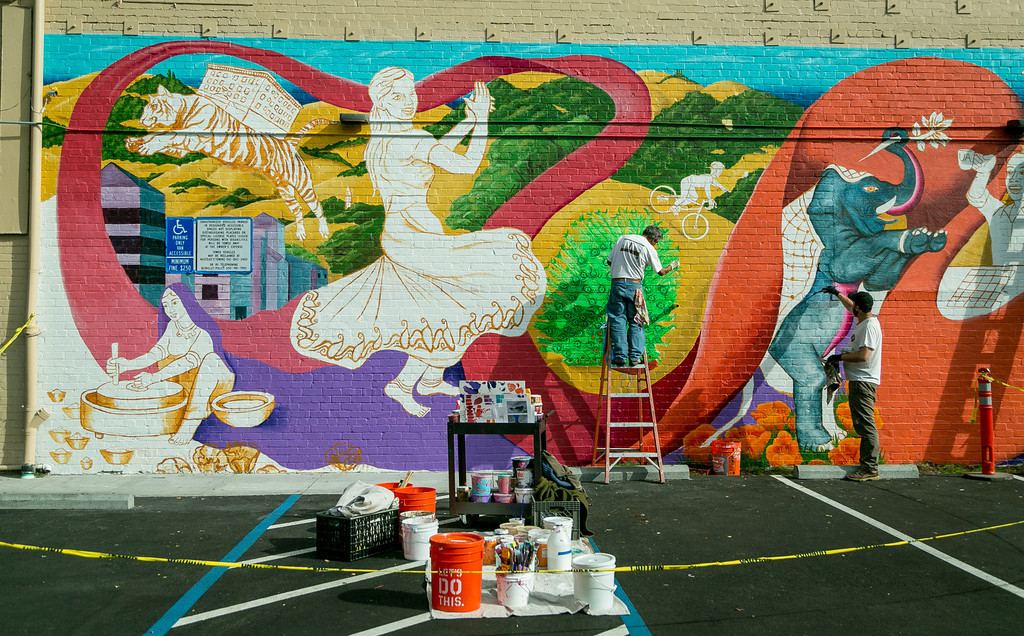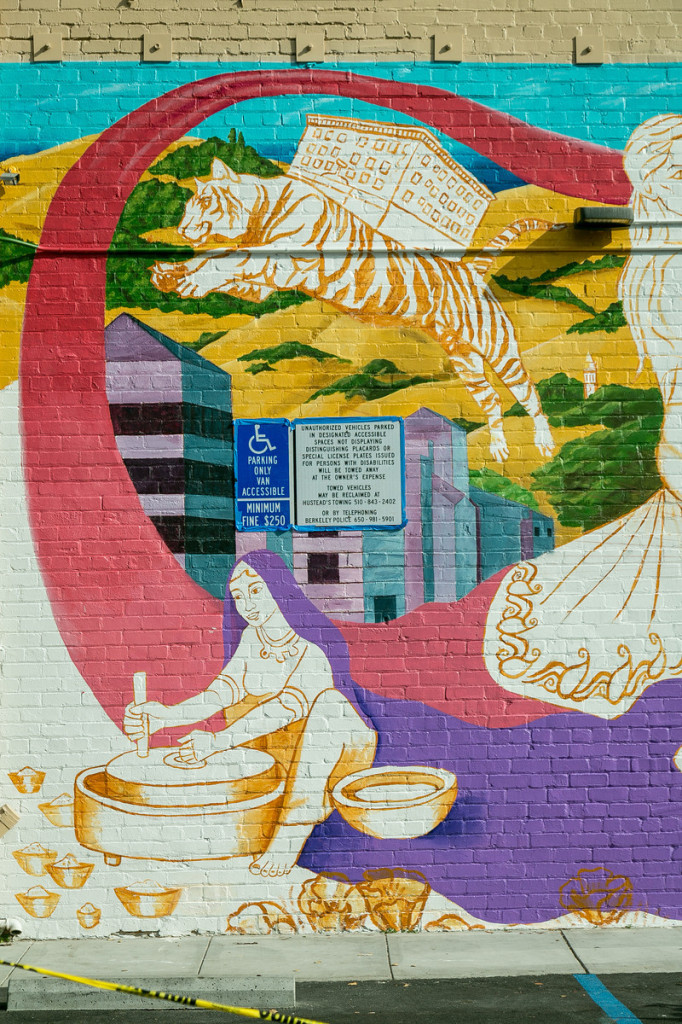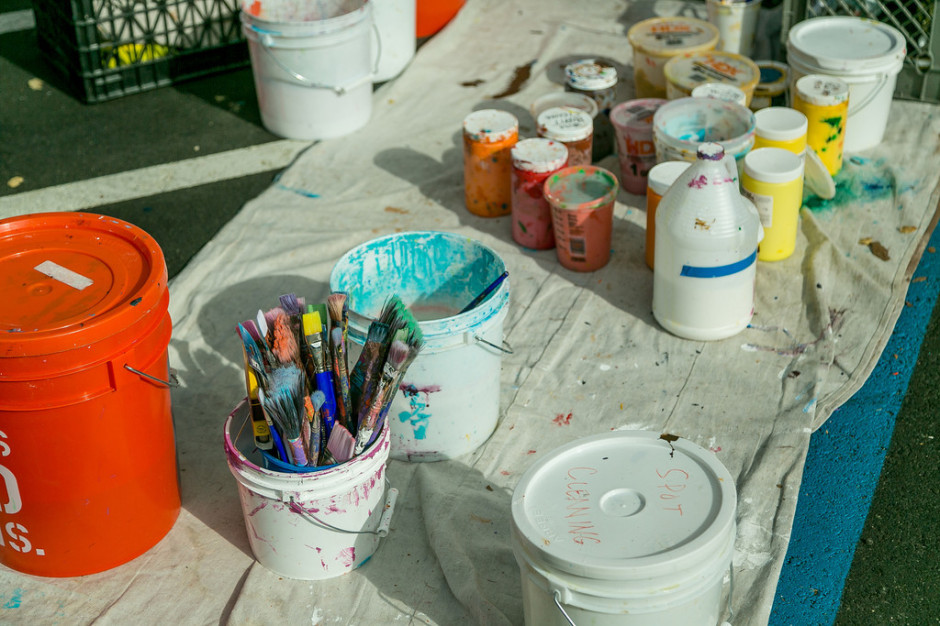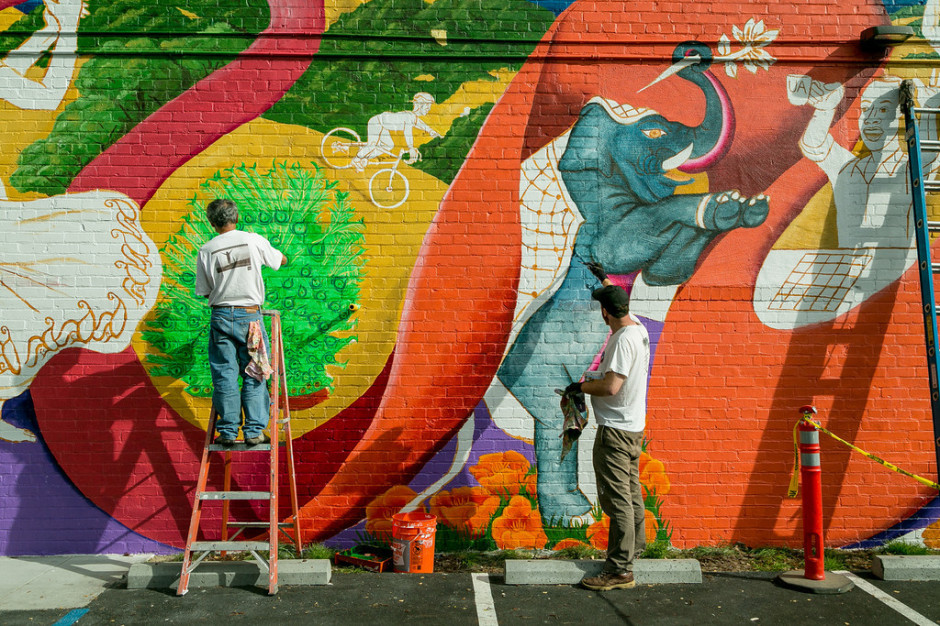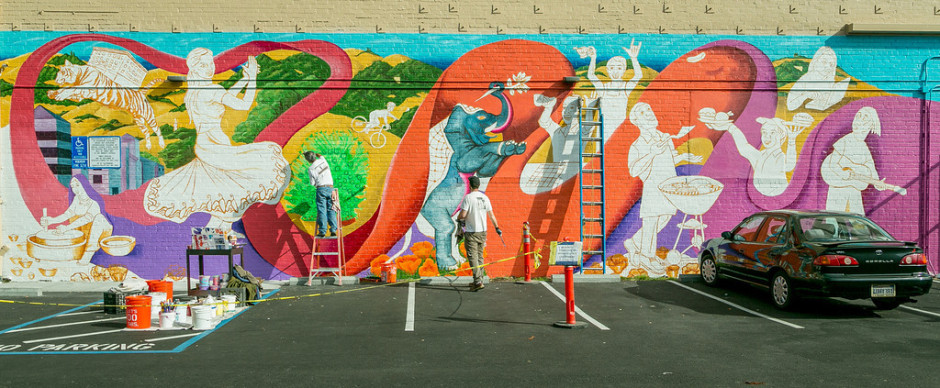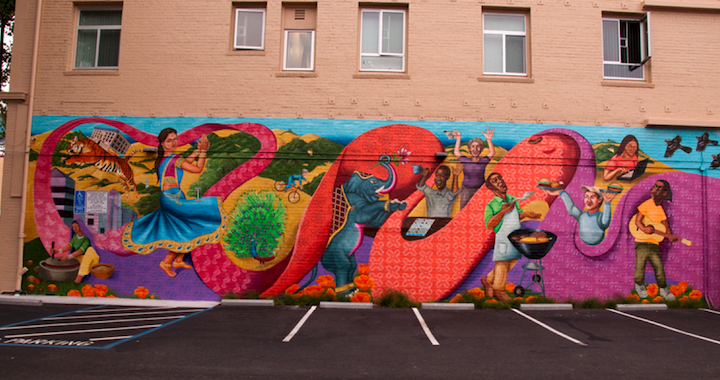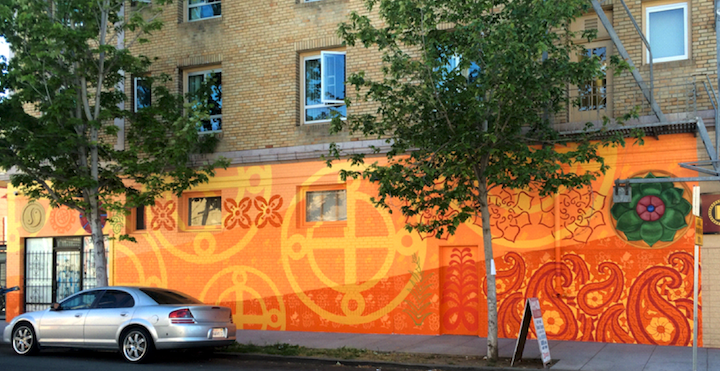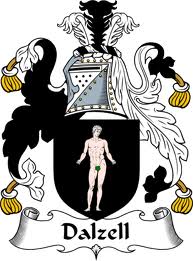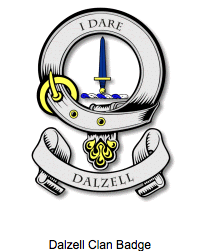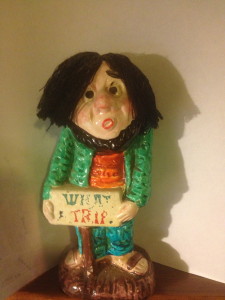The line between murals that celebrate struggle and murals that celebrate ethnic pride is not a bright line. This posting and the murals-of-struggle posting should be considered a whole, or a continuum.
I have some slight reservations about these murals because they are mostly commissioned works of public art. I am, I think, ignoring most commissioned works of public art, but murals have innate quirk and the subject matter of these murals adds to the fabric of Berkeley so – they are in. And boy do they have a great song to go with them:
Let’s start with murals that celebrate the Ohlone people. They were primarily acorn-gatherers. They lived in small villages around the bay. They were decimated by European contact. As in – decimated. Ten percent of the population survived the initial century of contact.
First, appropriately, is in Ohlone Park, just west of Milvia, just north of Hearst.
Jean LeMarr painted the mural in 1995. It was touched up in late 2013. Here are the words describing the creation:
Long ago the creator made the world.
After a great flood covered all but the peak
of the sacred mountain,
Coyote, Hummingbird, and Eagle
found the land and waters where we live.
There is a large (40 feet long) mural on the Ohlone Greenway along the BART tracks where Neilson deadends coming off Gilman.
It was designed by Alan Leon and painted between 2000 and 2002, commissioned by the Berkeley Civic Arts Commission. It is called either “Parallel Migrations” or “From Elk Tracks to BART Tracks.” It depicts the evolving natural and cultural history of the East Bay.
It includes this depiction of the Ohlone people.
The highest production values of the several Ohlone murals is found on the University Avenue underpass at 4th Street, near the Amtrak station, where you park if you are going to Brennan’s in old Southern Pacific station, where Mrs. Brennan’s Custard is, in my book, the best dessert in Berkeley. Not to mention a to-die-for steam table.
John Wehrle painted these. First, a sweet scene of nature and lone Ohlone paddler:
Look more closely on the left.
A submerged car and a street sign for Fourth and University. Quirky!
On the eastern end of the installation are cut-out dancers.
The cars kind of ruin it. Or make it, depending on your point of view.
After the Ohlone came the Spanish. Let’s double back to the Greenway mural. John hates to double back so we’ll just do it digitally. Not really driving back there.
The Spanish encountered, conquered, and blended with Indians.
The Mayan creation myth is depicted in a bright mural on Euclid (1152 Euclid) as it winds up Euclid from Codornices Park. Franci Kandl commissioned the mural, “The Sacred Alignment,” by Ernesot Hernandez-Olmos.
The logical extension of the Spanish/Indian heritage is the Mexican/Mexican-American heritage or the Chicano heritage. Young people don’t seem to be using the term “Chicano” anymore They don’t seem to understand it. Too bad – I liked it a lot. One of my favorite shows on KPFA is La Honda Bajita. Miguel Molina is as good as it gets in my book. He gives us Chicano/Xicano culture like nobody’s business.
I have listened to the show for more than 30 years – not regularly, but it is go-to radio on Friday nights. You ask what this has to do with murals? If you have to ask the question, you won’t understand the answer.
I have subsumed most of the murals of Mexican-American pride within the struggle murals posting, but there is one that speaks to culture, not struggle.
This 1982 clipping tells us that Berkeley High students helped paint the mural. Sadly, it is gone. It was there when I started blogging in 2013. It is gone now.
The building has many images besides this. Several are of urban youth of color:
The youth on the bottom is wearing a hoodie. Trayvon Martin was wearing a hoodie when Geroge Zimmerman murdered him. Geraldo Rivera condemned the hoddie as “thug-wear.” Really? Richard Sherman of the Seattle Seahawks got called a thug a lot after his 2014 rant about the 49ers. He is many things, but not a thug. And he said – brilliantly in my book – “It seems like [thug] is the accepted way of calling somebody the N-word nowadays.” I agree. And I digress.
In 2013, activist neighbood artists designed and installed a mural on the wall of an abandoned liquor store on Sacramento just north of Ashby.
The mural honors William Byron Rumford (the first African American elected to public office in Northern California and the author of the 1963 Fair Housing Bill) and Burl Toler Sr., (a professsional football player and the first African American official in the NFL).
Driving east on Alcatraz, you have seen the next ethnic pride mural. What a cool story behind it. It is on Ellis, running 70 feet north from Alcatraz. It is two stories tall. It is called “Health Through Music.” It honors musicians of color. It is really something.
But there is more to the story.
The senior artist was Edythe “Edy” Boone. She is really something. Jose Gonzalez and David Stern Gottfried were her assistant artists. Much of the painting was done by 25 homeless and low-income youth. Some were employed by Berkeley Youtworks, which was funded by stimulus money.
What a story. What a mural:
Music is also honored in the remants of the once-huge mural on Willard Middle School on Telegraph, originally painted by Osha Neumann and David Galvez.
Pete Goodeve, who made the photo below, says: “I consider it the most dramatic and beautiful mural I’ve ever seen, and it’s tragic that it was lost.” He tells the story of the photo: “I took the photo over 30 years ago, but by the time the mural was destroyed the slide was effectively useless. I don’t know if youvwere familiar with Impac Photo, next to KPFA on Grove St (as it was). I started usingvthem because they were cheaper than Kodak and the slides looked fine…for a while. They used 5247 motion picture negative film, from which they printed the slides. What I didn’t realize was that they would fade badly. Ih the end they had a full range of color — as long as it was pink! However I of course also have the negatives, and they don’t seem to fade. So now that I have a good digital camera and some image manipulation apps I was able to copy the negative and process it to restore (closely, I think) the original colors.”
What a mural this was! Yes, I said “was.” Most of it got painted over in 1997.
There are only remnants left.
One remnant deals with African-American culture.
The other treats Mayan mythology.
I liked the liquor store at Ashby and Martin Luther King Way because it hung on to the name “Grove Street Liquors” for a long time, long after Grove Street became Martin Luther King Way. But then it changed to Ashby Super Market. Too bad. I loved having Grove alive.
There is a large mural on the southern wall – along Ashby – honoring different cultures and cultural institutions of the neighborhood.
This panel features Joseph Charles, the Waving Man.
He is honored elsewhere by the Berkeley Historical Plaque Project.
When I say Popeye, you probably think of
Or maybe
But probably not a celebration of people’s art. Music! Culture! Popeye’s Fried Chicken! Go figure. The Popeye’s story as they tell it:
Who knew? Arabi is a CDP (census-designated place) in St. Bernard Parish. And they gave us this taste sensation! Also – relevant here – the Popeye’s at 1775 San Pablo gives us six murals of zydeco musicians. The Oxford English Dictionary’s earliest citation for the word “zydeco” is 1949. They are not sure of the etymology, but believe that it comes from the Creole pronunciation of the French les haricots from dance-tune title ‘Les haricots sont pas salés.’ You remember that song, right?
We must mention the King of Zydeco, Clifton Chenier, and then check out the Popeye’s murals.
I might be a complete sucker here, but I like these murals. If I find out something terrible or mass-produced about them I will delete them and we will never speak of this again, but right now I think I’ll listen to a little Justin Wilson and move on. And try to avoid the temptation to explore other visual depictions of Cajun culture and Zydeco music.
UPDATE: I tried to avoid the temptation. I failed.
UPDATE: As of February, 2015, the cajun musicians are gone. I guess that they were not standard Popeye issue. The street hath taken away. At least we have these photos.
Brazilians are proud people, and the Casa de Cultura at 1901 San Pablo features a wonderful mural by Sylvia La rejoicing in the culture of Brazil. Music? Of course.
Charlotte and I watched Brazil beat the Ivory Coast 3-1 in the 2010 World Cup on television here.
It was perfect – cinder block walls, folding metal chairs, and a couple hundred Brazilians who were pretty passionate about soccer. There are photos inside the center of Bahia.
For me the photos evoke the fiction of Jorge Amado.
I read everything that he wrote that has been translated into English. I bought most of them in hardback at Moe’s and Shakespeare. I saw Dona Flor at the Castro Theatre in San Francisco. Perfect!
Sonia Braga! I initially included reading Amado in Portuguese on my bucket list, but Sally Woodbridge would have none of it. “Don’t waste your time reading Proust in French and Garcia Marquez in Spanish and Amado in Portuguese,” she told me just before I went to Vancouver in 2011. “Engage in creative narcissism instead.” Which I am here. I hope.
But – the murals:
There is another Brazilian mural, at the food joint near Ace Hardware:
Finally – a mural that honors Indian culture. As in the subcontinent. It is on the west-facing wall of 1036 University. The Bombay Spice House occupies the street level of the UA Homes, a Section 8 project of single room occupancy apartments.
Eduardo Pineda designed and lead painting of the mural. Here it is finished:
The fabric suggests community. Symbols within the fabric change through the mural, as it moves from symbols of Indian culture to symbols of African-American culture.
The 10th Street side of the building has a mural as well.
It incorporates symbols found in the architectural flourishes of the building, which was built in 1926. Yes – including the yin-yang sign.
I know that there are more Berkeley murals that fit this category, and I will add them. I just wanted to get something good up instead of waiting for the perfect. And, yes, I know that I used “really something” too much. I was trying to make a point.
My friend looked through these photos and decided he needed to pin down my own ethnic/national heritage.
“Your mother’s mother?” German and Dutch.
“Your mother’s father?” Alsatian.
“Your father’s mother?” Dutch and English.
“Your father’s father?” Scotch. From Belfast. 1848. From them our family coat of arms:
Freeman stand or freeman fall! My friend digs (his word, not mine) the coat of arms. The body on the coat of arms is from the time of Kenneth II, when a member of his court retrieved the body of the king’ s friend from enemy territory with the words “I Dare”, which is now the family motto.
Dare I ask my friend what he thinks of the photos of murals of ethnic pride?


